







M SERIES A MAGNIFICENT LINE UP SCAN HERE TO VIEW THE RANGE AUGUST 15, 2023: ISSUE 782 www.ruralnews.co.nz TO ALL FARMERS, FOR ALL FARMERS Turn to page 1 BE IN TO WIN ONE OF THREE TRIPS TO THE CALGARY STAMPEDE 2024* More details over the page! *Terms and conditions apply. For more details see www.farmlands.co.nz FAR_10913
A TRIP TO THE CALGARY STAMPEDE

Buy any two inputs of Seed, Ballance Fertiliser or AgChem from Farmlands this spring and you could win one of three trips to the Calgary Stampede July 2024!* Minimum spend $2,000.
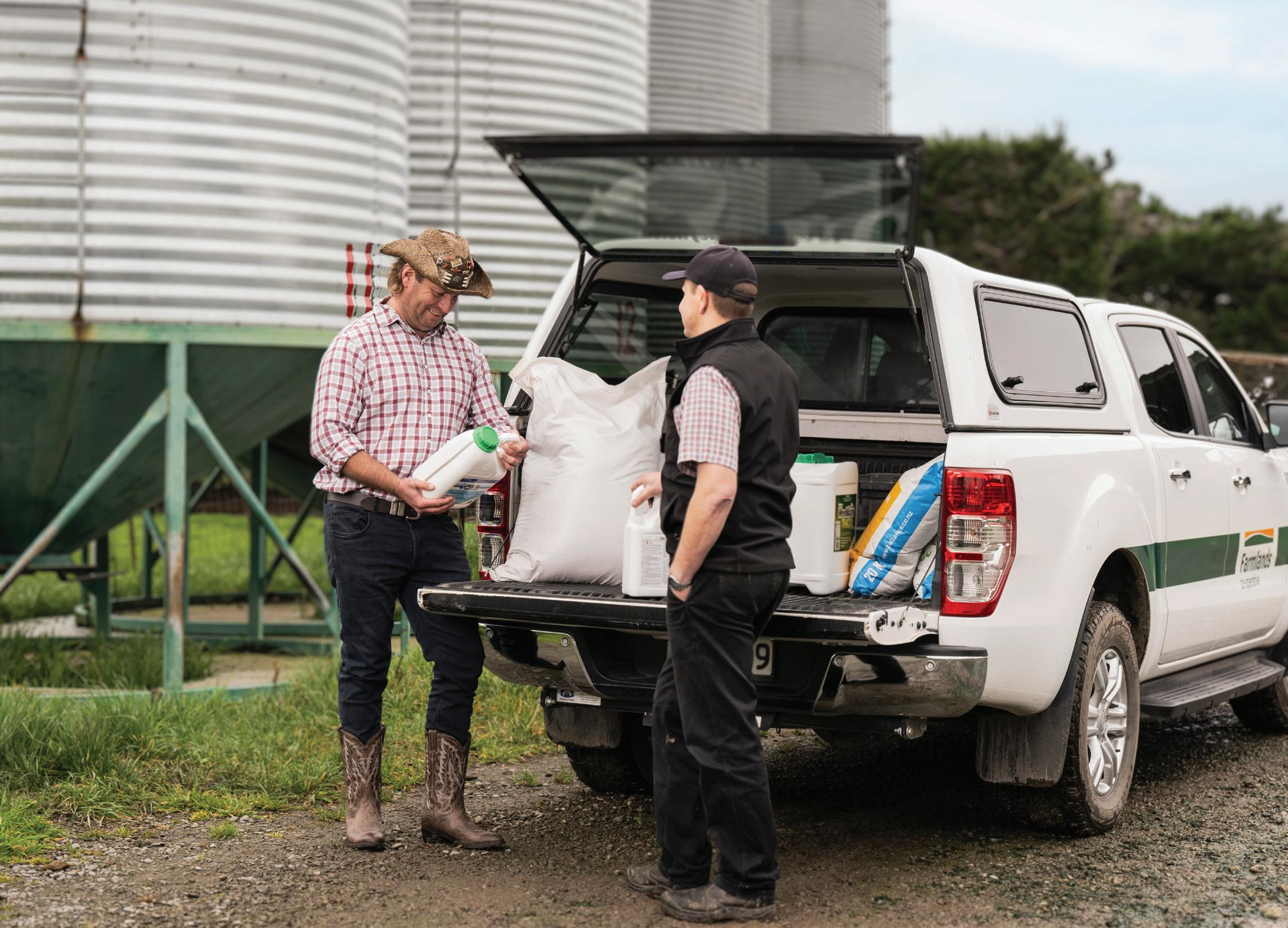
Purchase today through your Farmlands store or TFO.
Growing High-yIEld winter feed crop
A



Often seen as an expensive crop to grow per hectare, with the correct agronomy, fodder beet can be one of the cheapest winter feed crops per kg of dry matter to grow. There can be issues when put under early weed pressure, but it’s an excellent option when you need a high-yielding winter feed crop.
Checklist to consider when considering growing fodder beet and selecting your variety:
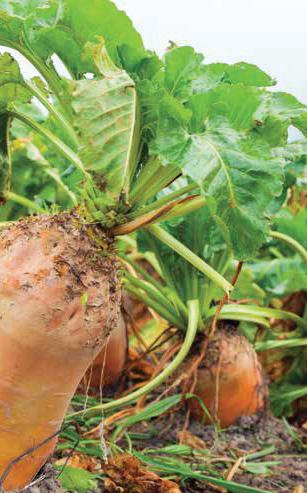

Do you need winter feed for young stock?
Do you have issues with Rhizoctonia?
Do you know your soil type?
Have you had a soil sample taken?
Is the paddock near a waterway?
Is the slope of the paddock less than 10%?
Have any residual herbicides such as picloram, chlorsulfuron, or aminopyralid been applied in the last 18 months?
Will you require resource consent for growing fodder beet?
Are you considering lifting part or all the crop?
Have you considered your livestock supplements?
To find out more about Fodder Beet and the right cultivar for you, talk to your TFO or Farmlands store.
Top Spring Spray-out Products
If you plan to plant Fodder Beet in the spring, spray-out of the existing pasture, weeds or crop is the crucial first step to setting up for success. Spraying with CRUCIAL® will reduce competition from weeds in your new Fodder Beet crop to give it the best chance of establishment. Plus, Pulse® Penetrant increases the speed of CRUCIAL’s uptake and provides a 15 minute rainfast commercial guarantee.
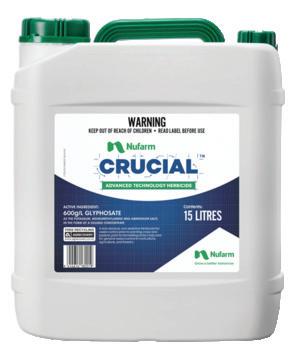

Fertiliser Recommendation
Cropzeal Boron Boost is a high-quality compound fertiliser and is particularly suited for use with fodder beet. It contains nitrogen, phosphorus and boron. Every granule contains the same ratio of nutrients, supporting even crop establishment and growth. It is important to take a soil test and get a fertiliser recommendation that is right for your crop.

WIN Be in TO
*Terms and conditions apply. For more details see www.farmlands.co.nz
TO ALL FARMERS, FOR ALL FARMERS
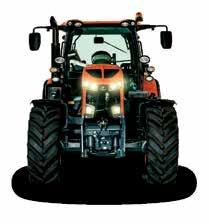

Minister left red-faced!
IT WAS touted as a debate that would end with blood on the floor.
However, the Red Meat Sector Conference cross-party political debate between Agriculture and Trade Minis-



ter Damien O’Connor and National’s trade and agriculture spokesman Todd McClay was a relatively subdued affair – that is, until a potential free trade deal with India popped up.
The Government came under fire for dragging the chain when it comes to laying the groundwork for an FTA
Farmers’ wallets shutting?
with the world’s second most populous country.
The 150 people in the audience – red meat sector leaders, farmers, and service providers – gasped when O’Connor claimed that Meat Industry Association chief executive Sirma Karapeeva had suggested that dairy be


excluded from any potential deal with India.
Karapeeva, who was in the audience, shouted that she did not say that, leading to an exchange with O’Connor.
The Minister also raised eyebrows amongst the crowd when he suggested that NZ does not tax enough and we
should look at raising taxes.
Debate moderator Tova O’Brien brought the Indian FTA up, asking both men if it was a priority.
McClay claimed it wasn’t a priority for the present Government. He pointed out that Australia had “some sort of deal” where their sheepmeat tariffs to India drop from 30% to zero.
“If you said that that was all you were going to deliver to the NZ sheep sector, imagine how much meat they will sell there next year.”
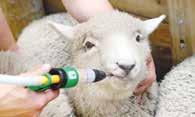
O’Connor said India was a very challenging market.
He said Australia “had a few more things to put on the table than NZ does”.
“And Sirma said that we should maybe walk away from dairy and even leave it to one side.”
This prompted the fiery reaction from the crowd.
“I don’t think she said that,” someone shouted.
Then Karapeeva chipped in, “I didn’t say that.”
But O’Connor was adamant.
“You backed up Murray Taggart’s statement that maybe it’s time to walk away and not have everything on the table.
“We believe it’s unrealistic.”
Karapeeva says she called for “an adult conversation” on the strategy to deal with an Indian FTA.
Fonterra recently dropped its forecast farmgate milk price from $8.00/kgMS to $7.00/kgMS. This also comes at a time when on farm costs right across the primary sector remain high and prices for primary exports have dropped. South Canterbury dairy farmer Ewen ‘Horrie’ Holliver (left) – alongside his team members Paula Fonokalafi, Cade Holliver and Barry Crichton — milks 1000 dairy cows across 325 hectares. Holliver says that increasing costs have meant that margins are tight. “Everyone’s a bit worried, even the people I talk to in town. They’re thinking ‘if farmers aren’t spending, there’s not going to be any money coming in’.” – See more page 6
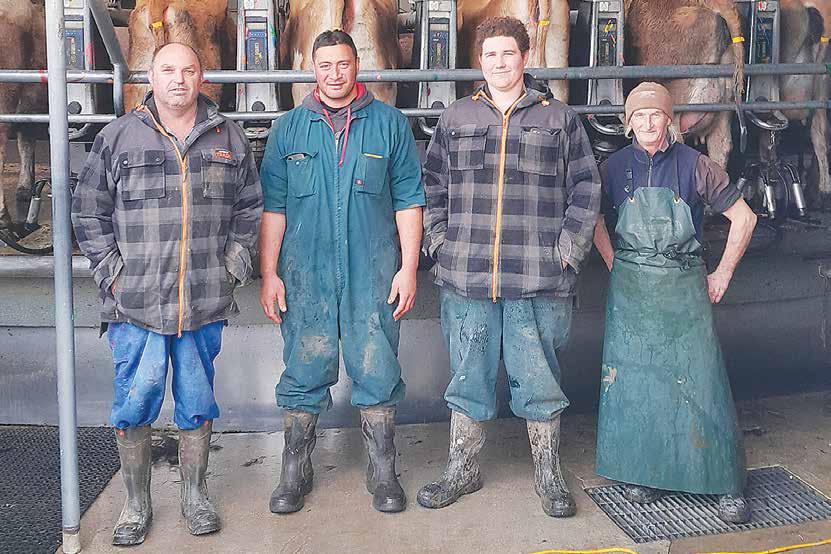
O’Connor says he disagreed and they have been open with stakeholders.
“We have to be honest, not promising something that we can’t get.”
O’Connor says he will be heading to India soon to talk about an FTA with authorities.
AUGUST 15, 2023: ISSUE 782 www.ruralnews.co.nz
NEWS Kiwis help Mongolian shearers sharpen their skills. PAGE 13 ANIMAL HEALTH Time to re-evaluate pre-lamb drenching. PAGE 24 NEWS Hort sector urged to M SERIES A MAGNIFICENT LINE UP SCAN HERE TO VIEW THE RANGE
SUDESH KISSUN sudeshk@ruralnews.co.nz
NORTH ISLAND AGRICULTURAL
Scan
STARTS: FRI 25 AUG 2PM | ENDS: THU 31 AUG 7.30PM
• Unused New Holland Megacutter 860P Mower
• Unused New Holland Duradisc F300 Mower
• New Holland Square Baler BB1290 Plus
• New Holland Square Baler BB9060
• New Holland Square Baler BB950A
• New Holland Roll Baler 135 Combi Bale Wrap
• New Holland Roll Baler BR6090 Combi Wrap
• New Holland Roll Belt 150 Cropcutter Baler
• New Holland Roll Belt BR740 Cropcutter Baler
• Lely Roll Baler 245 Combi Bale Wrapper
• New Holland T7-250, 7,571hrs & Front 3PL
• New Holland T6-180 1331hrs Cab
• New Holland T5-105 6736hrs & Loader
• New Holland T4-105, 2,703hrs & Loader
• New Holland TS110A 6334hrs & Loader
• New Holland T6050 4856hrs & Loader

• New Holland T6030 4252hrs & Loader
• Kubota M7152 691hrs & Loader
• Kubota M7151 868hrs Cab
• Kubota M7171 2,765hrs & Front 3PL
• Kubota M135X 6,272hrs & Loader
• Kubota M126X 6,742hrs & Loader
• Kubota M100GX 4,650hrs Cab
• Kubota M9540 3,363hrs & Loader
• Massey 5445 2381hrs & loader

• Case IH JXU105 4620hrs & loader
• Case IH CX70 6,780hrs & Loader
• Claas 640 Arion 7731hrs Cab
• Landini Ghibi 90 3901hrs & Loader
• Unused Quickie C13S loaders & 4in1
Hay Equipment
• New Holland FR9080 Forage Harvester
• New Holland 8 Row Maize Front
• Unused Kuhn GMD 310 3pl Mower
• Unused New Holland ProTed 690 Tedder
• Unused New Holland ProTed 880 Tedder
• Unused New Holland C820 Rotor Hay Rake
Contact: Bryan McNeilly M: +64 273 580 432
• McHale 991B Trailing Bale Wrapper
• Hustler Bale Feed Out Unrolla LM105
• Hustler Soft Hand Bale Grab
• Fella SM 2460 3Pl Disc Mower
• Robinson Super Comby Feed Wagon
• Giltrap MSX100 Feed wagon
• SIP Star 850/26 & Spider 900/8 Rakes
Tillage & Seeders
• Unused NH Mouldboard 5 Plough
• Unused NH Mouldboard 4 Plough
• Kuhn Multi-Master 123 5 Plough

• Gaspardo Gigante 4mtr Disc Seeder
• Breviglieri 3mtr 3Pl Rotory Hoe
• APV PS250 Seeder & Tyned Weeder
• Hustler Katipoi 890 3PL Sprayer
• Vaderstad RX450 Roller Trailing
• Maschio Powerharrow DMR3000 SD

• Aitchison Cambridge Roller 3m
• Sam 5 Tonne Trailing Spreader
ATV & Lawn Mower
• Kubota RTV-X1120 Side by Side

• Kubota RTV-900 Side by Side
• Kubota F3680 Lawn Mower
• Kubota GR1600 Lawn Mower
• Kubota BX2670 Lawn Mower
Location: 11 Athy Pl, Wiri Auckland and 155 Flygers Line, Palmerston North.
Inspections: Mon 28 - Thu 31 between 9am - 4pm
SOUTH ISLAND AGRICULTURAL
ONLINE BIDNOW AUCTION ONLINE BIDNOW AUCTION
STARTS: FRI 25 AUG 2PM | ENDS: THU 31 AUG 7PM
Tractors
• New Holland T4.100F 0hrs, Narrow
• New Holland Boomer 50, 0hrs & Loader
• New Holland Boomer 35, 0hrs & Loader
• New Holland Boomer 25, 0hrs & Loader
• New Holland T7-185 5,910hrs & loader
• New Holland T7-165 1,086hrs & Loader
• New Holland T6-175 3,883hes & Loader
• New Holland T6-175 7,323hrs & Loader
• New Holland T7050 9260hrs & loader
• New Holland T6070 4,170hrs Cab
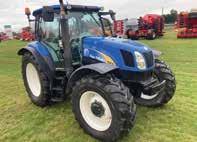
• New Holland T6050 4,074hrs & Loader
• New Holland T6050 5,140hrs & Loader
• New Holland T6030 3,195hrs & Loader
• New Holland TS135A 8726hrs & loader

• Kubota M7171 2,295hrs & Loader
• Kubota M135GX 6286hrs & loader
• Case IH MUX135 5,400hrs & loader
• Case IH CVX1190 8,990hrs Cab
• McCormick MC105 & loader
• Deutz K610 3,398hrs & Loader
• Massey Ferguson 6,368hrs 8680 duals
• John Deere 6620 & Loader
Grape Harvester
• Braud 9060L SP 4,495hrs Harvester
Tillage & Seeders
• Unused NH Mouldboard 5 Plough
• Unused NH Mouldboard 4 Plough
• Vaderstad Rapid RDA800S Disc Seeder
• Vaderstad Rapid RDA600S Disc Seeder
• Vaderstad Rexius RS 820 Roller
Contact: Bryan McNeilly
M: +64 273 580 432
• Horsch Simba Pronto DC6 Disc Seeder
• Horsch Simba Pronto DC6 Disc Seeder
• Monosem NG4 plus Vac Planter 12 Row
• Kverneland Monopill SE 18 Row Planter
• Taege 300EDW 3mtr Tyne Seeder
• Aitchison Roller Drill 20row Seeder


• Alpego RK350 Power Harrow Disc Seeder
• Jean De Bru Monoliner VRV36 Offset Disc.
• Simba Great Plains SL500 Cultivator
• Amazone Catros 5501-T, 5.5m Speed Till
• Lemken Diamante Reversable Plough 7 Farrow

Hay Equipment
• Unused Khun 8131 Hay Rake
• Unused New Holland ProTed 690 Tedder
• Unused New Holland ProTed 880 Tedder
• Unused New Holland C820 Rotor Hay Rake
• Unused New Holland Megacutter 860P Mower
• Unused New Holland Duradisc F300 Mower
• Gowell Roll Baler F1 F125 Combi Bale Wrap
• Gowell Roll Baler G5020 Trailing Wrapper
• Massey Ferguson 187 Square Baler
• Kongskilde GSX3206 3Pl Mower
• Kongskide VM22-2 Mixing Wagon
• Giltrap RG21 Side Feed Out Wagon
Extras
• Mailleux Loader Frame MX T10
• Agris Quip 3Pl Spreader
• Husqvarna R216 Ride on Lawn Mower
• Husqvarna TC342 Lawn Mower
• Tyre & Rims, GP Buckets
Location: 81 Branston Street, Hornby South, Christchurch
Inspections: Mon 28 - Thu 31 between 9am - 4pm
Scan QR code for more information


This is an Online BidNow Auction only and is to be conducted on Manheim website only.
must register to Bid on www.manheim.co.nz
click on QR code for registration.
Buyer’s Note:
You
or
or click on QR code for registration. Tractors • Merlo TF35.7 2496hrs Telehander • Case IH Farmall 60B, 0hrs ROPS • New Holland Boomer 25, 0hrs Loader • New Holland Boomer 25, 0hrs Loader • New Holland TD5.90, 0hrs Cab • New Holland T4.95F, 0hrs Narrow • New Holland Boomer 25, 0hrs Loader • New Holland Boomer 35, 0hrs Loader • New Holland T7-290 HD & front 3PL
Buyer’s Note: This is an Online BidNow Auction only and is to be conducted on Manheim website only. You must register to Bid on www.manheim.co.nz
• Cub Cadet Lawn Mower QR code for more information
ISSUE 782
Labour shortages easing
SUDESH KISSUN sudeshk@ruralnews.co.nz
LABOUR SHORTAGES in the meat processing sector are easing with more migrant workers joining the ranks.
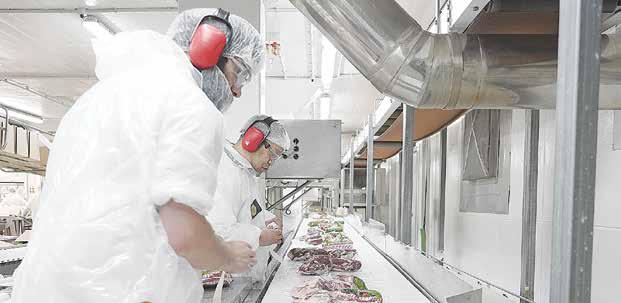
Under the Accredited Employer Work Visa programme, meat companies are finding it easier to source migrant workers, says the Meat Industry Association (MIA).
It claims that labour shortages cost the meat sector $600 million in lost exports over the past two years – due to carcasses not being fully processed and valuable co-products like tripe and offal being put to one side.
MIA chief executive Sirma Karapeeva says the sector has seen improvements this year.
“It’s getting easier now to source migrant workers,” she told Rural News “We are still short of workers and there are some delays in processing visas, but the labour situation is improving.”
Another labour issue being dealt with by NZ meat processors is availability of halal butchers. Two cohorts of halal butchers have been trained in Fiji and Indonesia and are being recruited by processors.
Karapeeva says halal butchers need unique skillsets – both technical and religious attributes.
The halal butchers in Fiji and Indonesia have been trained to meet NZ requirements and qualifications.
Halal certified products contribute $4.1 billion of annual export earnings. Processing companies across New Zealand rely on 250 halal butchers, who make up just 1% of the total workforce.
Karapeeva says the sector can typically recruit only 100 halal butchers domestically due to this country’s small Muslim population and the nature of the job.
“A religious component is a fundamental part of the job because they
must be a practicing Muslim, which we obviously cannot train for. We have no other choice but to look overseas to fill the vacancies,” she says.
“Halal processing helps our industry capture greater value for our products.”
She adds that having each animal processed by a halal butcher means that different parts of the same carcass can be sent to various markets around the world.
“Halal processing helps our industry capture greater value for our products. Having each animal processed by
a halal butcher means that different parts of the same carcass can be sent to various markets around the world.”
From March this year, halal butchers were added to the Government’s Green List work to residence tier, which the MIA described as a positive first step.
This meant that halal butchers, who joined the Green List from March 2023, are able to count time on a work visa from 29 September 2021 towards their work to residence requirement.
Farmer confidence hits all-time low!
A RECENT survey by Federated Farmers of 1000 dairy, sheep, beef and arable farmers has found that confidence is at historic lows.
Feds president Wayne Langford says farmers are dealing with a lot at the moment with high interest rates, huge inflation and a steep decline in both meat and milk prices they receive for their products.
“We’re also facing an unprecedented level of regulatory change that is heaping on costs, undermining
profitability and creating huge uncertainty for farmers.
“Unfortunately, all these challenges have arrived at the same time, which just compounds the pressure farmers are feeling – it’s just not sustainable.
“We have real concerns about farmer wellbeing and what this might mean for farming families, rural communities, and the wider New Zealand economy.
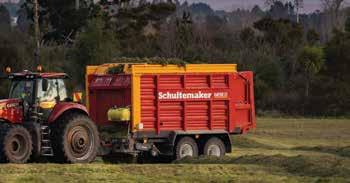
“When farmers aren’t profitable or
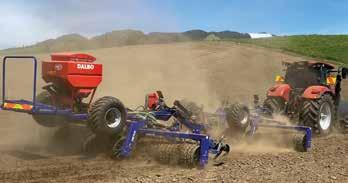
feeling confident, they stop spending money and try to cut any costs they can from their business. The implications of that flow right through the economy,” Landford added.
The Farmer Confidence survey was conducted in July 2023 – prior to Fonterra’s announcement that it was slashing $1 from their 2023/24 forecast milk price.
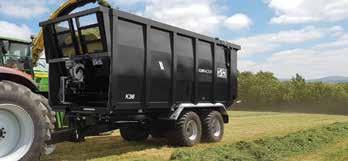
The four biggest concerns for farmers were debt, interest and banks, regulation and compliance costs, and
climate change and ETS policy.
“This is the second successive farmer confidence survey to set a new record low with a steep decline over the last six months – so we’re sounding the alarm,” Langford says.
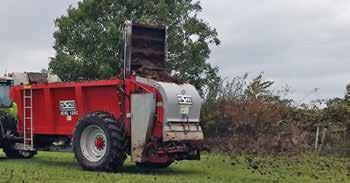


“This should serve as a wake-up call for all political parties, banks and processors that something needs to urgently change.
“There needs to be a real focus on reducing the costs and uncertainty farmers are facing.”
RURAL NEWS // AUGUST 15, 2023 NEWS 3 HEAD OFFICE Lower Ground Floor, 29 Northcroft Street, Takapuna, Auckland 0622 Phone: 09-307 0399 Fax: 09-307 0122 POSTAL ADDRESS PO Box 331100, Takapuna, Auckland 0740 Published by: Rural News Group Printed by: Inkwise NZ Ltd CONTACTS Editorial: editor@ruralnews.co.nz Advertising material: davef@ruralnews.co.nz Rural News online: www.ruralnews.co.nz Subscriptions: subsrndn@ruralnews.co.nz
www.ruralnews.co.nz NEWS 1-13 MARKETS 14-15 AGRIBUSINESS 16 HOUND, EDNA 18 CONTACTS 18 OPINION 18-20 MANAGEMENT 22-23 ANIMAL HEALTH 24-25 MACHINERY AND PRODUCTS 26-28 RURAL TRADER 28-30 www.cochranes.co.nz Cochranes | 03 3243 791 AMBERLEY | LEESTON | ASHBURTON | TIMARU | OAMARU | WEST COAST www.gaz.co.nz Giltrap AgriZone Product Specialist | 027 203 5022 CAMBRIDGE ŌTOROHANGA | ROTORUA | TAUPŌ
com/ruralnews
@rural_news facebook
Meat processing sector labour shortages are easing with more migrant workers joining the ranks.
Little respite for Wairoa in the wake of Cyclone Gabrielle
WAIROA DISTRICT
farmers are beside themselves with stress as they still deal with the effects of Cyclone Gabrielle and the numerous other storms that have hit the area.

Wairoa mayor Craig Little, a sheep and beef farmer, says the rain hasn’t stopped, the land hasn’t stopped slipping and some people in rural areas still don’t have proper access to Wairoa.
Wairoa bore the brunt of Cyclone Gabrielle and was physically isolated from the rest of the country for weeks, with the roads north and south of the town cut by slips and downed bridges.
Worse still, all power and telecommunications were wiped out for days on end, and more than 100 homes in the town
were flooded. However, six months on, while some sort of order has been achieved, major problems still exist – including road access.
“The farming settlement of Papuni, about 60km inland from Wairoa, is still without proper road access that can take large trucks. There is a slip there that is as big as the Manawatū Gorge and the land is still moving,” Little told Rural News
“The only way they have been able to get their stock out is to take them overland through neighbouring properties, which is difficult and stressful.”
A scarred and wounded region
SIX MONTHS on from Cyclone Gabrielle, despite everyone’s best efforts there is seemingly no end to the problems.
Wairoa mayor Craig Little says the scars and wounds around Wairoa are far from healed and almost on a daily basis more are occurring.
What the future holds is anyone’s guess.
“We are doing our best, but we
can’t beat the weather,” says the frustrated mayor.
Little is full of praise for the work of the transport agency, Waka Kotahi, which he says is doing its best. However, most of the repairs are temporary and it’s been a case of getting roads open rather than doing major repairs.
“There are three major bridges that need repairing and in one case,
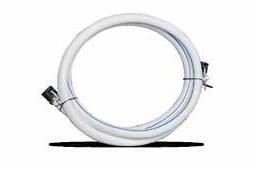
every time we start to do the repairs, the rain comes and we have to stop work,” Little told Rural News
“Just recently we had three new major slips come down in the space of a few days. It is so soul destroying because we do lots of hard work and then there is another incident and we are back to square one.”
The other worry in the minds of many farmers, according to Little, is
According to Little, a trip to Wairoa from Papuni would normally take about half an hour, but it’s now taking them two-and-a-half hours.
The slip at Papuni can’t be repaired at present because the hillside is still moving and it is too dangerous for contractors to work on the site. Even the normal trip from Wairoa to Napier is taking much longer.
Little adds that a trip that once took him an hour and half is now taking two and half hours because of all the road works.
He says it was always a dangerous stretch of road but is now even more dangerous.
“This is all so depressing and it affects you emotionally,” he says.
“We have a huge attachment to the land and it’s not nice going around the farm. On my

what the summer will bring. He says some fear a drought similar to what happened after Cyclone Bola back in 1988, which was devastating for the region.
As well as the woes of the rural community, the mayor and his council are still coming to grips with dealing with the people in the town who lost their homes. He says the government funding for flood protection is
farm even the hillsides are pugging up, which I’ve never seen before. Trying to move stock around is a nightmare because so many fences are down and tracks destroyed.”
On top of having to deal with the ongoing rain, slips and damage to his farm, Little and other farmers are being hit by the sudden, rapid fall in lamb and beef prices. He says some farmers are quitting stock early while others wait, hoping for better prices which simply haven’t come.
On farm costs are also ratcheting up.
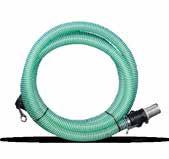

“I’ve got a mate who’s now a stock agent but who sold his farm before Gabrielle.
“He told me that his job as a stock agent is now turning into that of a counsellor because farmers are just so stressed.”
most welcome and will give people certainty that they can rebuild and have a secure future.
Little believes that if this same package was offered after Cyclone Bola in the 1980s there would not have been the same degree of flood damage that there was with Gabrielle.
– Peter Burke
RURAL NEWS // AUGUST 15, 2023 4 NEWS
@rural_news facebook com/ruralnews
peterb@ruralnews.co.nz
PETER BURKE
“This is all so depressing and it affects you emotionally.”
Wairoa farmer and mayor Craig Little says, six months on from Cyclone Gabrielle, major problems still exist in the region – including road access.
Concerns over ‘non recovery’
PETER BURKE
SIX MONTHS on from Cyclone Gabrielle, a farming leader says the so called ‘recovery’ is almost non-existent.
Farmer and Federated Farmers board member
Toby Williams – whose property is just out of Gisborne – says despite the efforts of individuals, there are many ongoing factors that have made recovery nigh impossible. He believes it may take a decade before he and other farmers are back to where they were before the series of adverse events which have plagued the East Coast region for the past four years.
Williams says after Gabrielle they were hit by another storm, which actually did more damage. In his case, Cyclone Hale also caused more damage.
“It’s just been relentless. We’ve lost fences and a heap of ground and there have been a number of small slips, some of which have had to be cleared multiple times,” he told Rural News
“We had a digger in, but they had to stop work because it was too wet and dangerous for them to operate.”
Williams adds that a lack of fencing is a massive problem. He and

others have had to make temporary repairs to fences using iron stakes and netting to hold their farms together until permanent repairs can be made. But Williams says the concept of set stock-

ing has gone and he’s had to revert to what he calls ‘block stocking’.
“This means that instead of putting four mobs of 100 sheep in four separate paddocks, I’m forced to put the
THE CHALLENGING OUTLOOK
WILLIAMS SAYS with the massive impact of climate change and the present economic crisis, farmers everywhere, including Tairawhiti, need to take a hard look at their businesses to see what changes they need to make to remain viable.

He says for some in hill country regions it may mean farmers not finishing their stock as they have traditionally done, which in some cases is barely profitable.
Williams believes there needs to be a mindset shift and some hard conversations with financial advisors, accountants, banks and other farmers to come up with solutions. “This is a good opportunity to sit back and say, ‘I can’t continue doing what I am doing now, so what do I do?’” he explains. “Maybe I need to think outside the square and do some things differently to stay viable in the future.”
Williams says he’s had to wipe $150,000 from his budget because of the slump in lamb prices. He was budgeting on getting $160 each for his ewes, but this now looks more like $98.
“We are going into protection mode now because things are really tough,” he told Rural News
“Interest rates are crippling – with mortgage rates over 8% and the rate for working capital over 11%. Out costs are up by 30%, fertiliser has doubled in price, fuel prices have risen, and shearing costs have gone up by between 40% and 50%. What me and other farmers are saying, is there some way we can generate additional income off the farm.”
Williams believes the present situation may be temporary, noting that many analysts are saying the situation will improve over the next six months.
However, he says farmers are price takers and this means they can’t demand an extra dollar from a processing company or dairy factory to make ends meet.
Williams says this and the impacts of climate change makes farmers vulnerable and unless there is an improvement in commodity prices, some farmers won’t survive.
whole 400 in one paddock because I can’t repair the other fences.”
Williams runs 13,000 stock units on his 1500-hectare farm and says livestock condition is good, although with the cold, wet winter, feed is starting to get tight.
Six months on, access for farmers and to farms remains an ongoing problem. However, he says having the temporary bridges in place has made a difference.
Williams says while the Government has been forthcoming with finance to help farmers, there shouldn’t be an expectation that every time there is a major weather event the Government will bail out farmers.
He says the reality is that climate change is here to stay and farmers have to adapt to this.
RURAL NEWS // AUGUST 15, 2023 NEWS 5
peterb@ruralnews.co.nz
“It’s just been relentless. We’ve lost fences and a heap of ground and there have been a number of small slips, some of which have had to be cleared multiple times.”
0800 269 776 info@landquip.co.nz landquip.co.nz
NZ FARMERS HAVE MADE THE MOVE FROM TIMBER TO STEEL SHEEPYARDS. There has been a distinct shift to steel sheepyard systems since the skyrocketing timber prices has brought the two systems within the same price bracket. Steel having once been thought of as a premium pipe dream, are now within 10% of traditional timber systems. This, coupled with the unparalleled ROI of unbreakable steel systems make it now an obvious choice. The very same shift to steel in the cattle industry was made some 15 years ago. Staying true to the kiwi farmers way of pushing the boundaries of innovation and efficiency and ultimately being the ‘best sheep farmers in the world’ It is now great to see the new industry standard emerging to catch up with our farmers level and quality of operating. DESIGN, BUILD, INSTALL. Permanent and semi-permanent yard options, designed and built in New Zealand.
Toby Williams, whose property is just out of Gisborne, says the weather damage on his farm has been relentless – with fences lost and many small slips that have had to be cleaxred multiple times.
WHY
Dark times ahead on farm before any likely dawn appears
A LITTLE bit more darkness is expected before dawn starts to emerge.
That’s the warning from Rabobank’s agricultural analyst Emma Higgins as Fonterra dropped its forecast farmgate milk price from $8.00/kgMS to $7.00/kgMS. She says this follows another weak GDT auction, which saw dairy commodity prices fall below five-year averages.

This also comes at a time when on farm costs right across the primary sector remain high and prices for other primary exports have dropped. In its latest commodity outlook report, Rabobank says lamb prices contin-
ued to fall through July and are now approaching a five-year low. At the same time, the beef schedule has taken a hit
and global dairy prices are also falling.
Lamb prices fell by 7% in July alone, which is contrary to what would
normally happen. While the normal seasonal contraction in the supply of lambs in August and September may see prices come back a bit, the bank’s view is that weaker global prices and strong competition will likely mean that prices for lamb will be soft in the coming months.
The outlook for beef is not great either, with some strong competition from Australian beef exports that has been dampening NZ prices –a trend which may continue.
While export returns are less than favourable to NZ, there looms another problem: costs and inflation with overall on farm costs have risen by 13%.
DAIRY’S DECLINE
THIS DECLINE in the dairy sector was predicted several months ago in MPI’s June Situation and Outlook report.
Higgins says costs in the dairy sector have lifted 13% year-on-year, with the biggest hit coming from interest rates, which are up by 50% year-on-year. Meanwhile, fertiliser and general dairy shed expenses are up by 11% and insurance premiums are also up 9%.
But Higgins says the pain is not spread evenly across the sector. She says those farmers who have a lower cost structure have a competitive advantage – as do farmers who have lower farm expenses and higher debt.
She adds that those with low debt and high expenses are also faring okay. However, Higgins says there are a portion of farmers with high costs who are highly leveraged and are feeling the pressure.
“The fall is largely down to lower import demand from China which is currently working through a wave of milk – a surge
NO TIME TO SLOW DOWN MINISTER WARNS
FONTERRA SHOULD not back down on plans to reduce its carbon footprint despite the slump in milk prices, says Agriculture Minister Damien O’Connor.
He says reducing emissions is “a reality that Fonterra and the dairy sector must face”.
O’Connor says Fonterra cannot afford to “bury its head in the sand”.
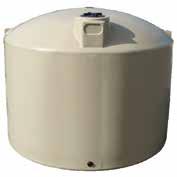

“This is a reality that we face, if we bury our head in the sand and ignore it, that makes the whole job tougher as we go down the track,” he told Rural News. “If we had started emissions reduction and focused on this
10 years ago, we would probably be in a better position today.”
O’Connor points out that major customers like Nestlé are setting emissions targets that Fonterra must either adopt or lose their business.
With the co-operative slashing a whopping $1/kgMS from its forecast milk price mid-point for this season, many farmers, facing higher input costs and rising interest rates, are now bracing for a loss.
This has prompted some farmers to ask the co-operative to slow down its $800 million decarbonisation programme announced last month.
The programme aims to reduce scope 1&2 emissions that come largely from manufacturing operations and the supply chain, by replacing coal with renewable energy.
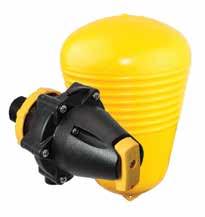
The co-op says it’s talking with farmers about a target for Scope 3 – emissions behind the farmgate –which will be announced shortly.
But some farmers want Fonterra to slow down and wait until things improve.
Cambridge farmer and Fonterra shareholder Garry Reymer says after the milk price bombshell, Fonterra must relook at its greenhouse gas
emissions goals.
“It might be better to start behaving like its farmer shareholders and put the cheque book away till things pick up,” Reymer told Rural News “$800m is a lot of money and you do have to question the timing of it.”
Former Federated Farmers president and Fonterra shareholder Andrew Hoggard says the co-op should be careful with the scope 3 target rollout.
He told Rural News that if the co-op required farmers to fill out multiple documents and took money out from their milk cheque for not
that has been growing for some years,” she told Rural News
“Production growth is slowing down –which is what we need to see for markets to rebalance – but the rate of growth for the first half of 2023 has exceeded our expectations. Milk supply growth was 7.5% YOY in the first half of 2023, with a slowdown in Q2 vs. Q1.”
However, Higgins says while markets are weak and times are very challenging, Rabobank does not see the present situation as a ‘super cycle’ downturn.
She points to the 2014/15/16 downturn, when the milk price plummeted from $8.40/kgMS (2013/14) to $4.40/ kgMS (2014/15). She says if we adjust for inflation, that’s like a milk price in today’s terms sinking from almost $10.60/kgMS to $5.50/kgMS.
Higgins says the triggers for a rebalance of the milk situation within China are in play, with milk prices falling, cost pressures rising and farm expansion slowing.
meeting targets, then he wouldn’t be happy.
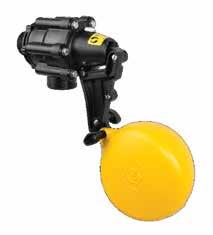
Hoggard wants something along the lines of the Clean Streams Accord initiative, where the co-op set longterm targets and gave farmers time to achieve them.

The ACT candidate says Fonterra shouldn’t allow itself to be held to ransom by a few major customers.
“These customers are willing to pay for it, they take the virtue and farmers end up doing the hard work. Fonterra must not just bend over but insist on getting some good returns.”
– Sudesh Kissun
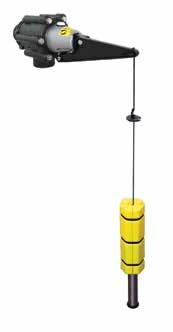
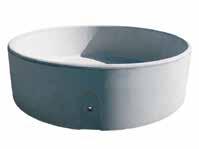

RURAL NEWS // AUGUST 15, 2023 6 NEWS
BURKE peterb@ruralnews.co.nz
PETER
0800 JOBE VALVES jobevalves.com • Up to 50mm Inlet • Flows up to 600L/min • For Storage Tanks • Easy Access to Valve • Inlets Upto 50mm • Avoids Starting & Stopping of Pump When Tank is Filling • Ideal for Cattle Troughs • High Flow • Side/Bottom Mount • Detach to Clean • Compact/Robust
Rabobank analyst Emma Higgins says farm
costs right across the sector remain high while prices for primary exports have dropped.
Lamb price to remain soft
LAMB PRICES are expected to remain soft as Chinese consumers struggle to put the effects of Covid behind them.
Lamb consumption in China hasn’t taken off post-Covid, resulting in high inventories in coolstores.
The New Zealand sheepmeat sector is bracing for opening prices in November of around $7/ kg, equating to $40-$45/ head lower than the previous two years.
North Island prices last month dipped to $7.20/kg. In the same week a year ago they were $9.10/kg. The South Island lamb price was forecast at 7.30/kg compared to $9.20/kg this time last year.
Meat Industry Associ-





































































ation (MIA) chief executive Sirma Karapeeva says the drop in lamb schedules is very much a China story.
“There is a lot of protein sitting in Chinese cold stores,” Karapeeva told Rural News. “The inventory is very high, and they are not buying. I suspect it will take a little while to work through the inventory levels before we see an uplift in demand and price.”
ANZ agriculture economist Susan Kilsby notes that a surge in demand for lamb products that followed China’s post lock-down reopening was short-lived.
Kilsby says Chinese importers were initially positive, pushing up the price of lower-priced lamb cuts and mutton, but they are finding it challenging to move

goods on. “Consumption has not lifted as quickly as expected, because consumers remain financially constrained and don’t yet have the confidence to spend as much as they once did on relatively



expensive products.”

Demand from importers has since waned, and prices have quickly retreated to lockdown levels. On top of that, a surge in supply from Australia has contributed to
the current market imbalance. Kilsby says Australian producers –also hoping to take advantage of the expected pick-up in Chinese demand – had increased exports over recent months.
“The downward trend in pricing now means buyers are holding off in the hope of even lower prices. Added to which, China’s demand for lamb generally weakens over the northern summer.”
Kilsby says we could be waiting some time for any significant improvement.
MIA chair Nathan Guy told the recent Red Meat Sector conference that exporters are facing a lot of headwinds in China.
“Their inventories are full, and the economy has softened,” he says.






Youth unemployment for those aged between 16-24 years is 21%.
Guy says this is a concern because “those are the people who go out and spend”.

The red meat sector is planning a trade trip to China later this year. Guy says the trip will be about creating greater awareness of NZ protein.
“We are going there to wave the flag and make China aware that we are great producers of protein that they need.”
RURAL NEWS // AUGUST 15, 2023 NEWS 7
SUDESH KISSUN sudeshk@ruralnews.co.nz
Finance under chattel mortgage with an interest rate of 0% pa, 30% cash deposit, the GST component repaid in the 4th month and monthly repayments in arrears over a 36 months term. Available for new retail orders placed before COB 30 September 2023, and installed within two calendar months of arrival, to approved purchasers for business purposes only. Fees, terms & conditions apply. Not available in conjunction with any other offer. Finance provided by AGCO Finance Ltd GST No. 88-831-861. Offer available at participating Massey Ferguson Dealers only, while stocks last.
ZERO REGRETS WITH 0% P.A. FINANCE * Right now, Massey Ferguson has an unbeatable 0% P.A FINANCE * offer on MF 4700, MF 5700, and MF 6700 tractors. Enjoy interest-free repayments for the entire loan term. Get in quick. This offer is limited so you have zero time to lose. 0% FINANCE* P.A. MF 6700 MF 5700 MF 4700 See your local Massey Ferguson dealer now. While stocks last!
The sheepmeat sector is bracing for opening lamb prices in November of around $7/kg, equating to $40-$45/head lower than the previous two years.
BORN FOR
Farmers confused over HWEN
FARMERS ARE finding themselves “extremely confused” about He Waka Eke Noa (HWEN), says Meat Industry Association chair Nathan Guy.
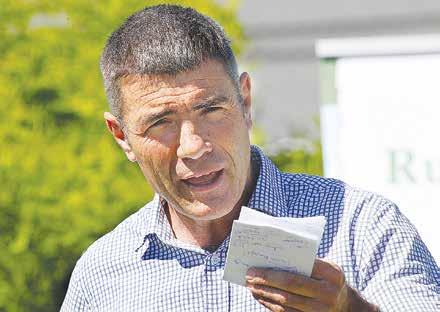
Speaking at the Red Meat Sector Conference in Auckland last week, he noted that politics continue to dominate the issue.
HWEN – a partnership between farmers, agricultural sector industry bodies and Māori –with input from Primary Industries and Environment ministries was formed to price greenhouse gas emissions at farm level.

In October last year, the Government proposed a levy on farmers for greenhouse gas emissions to begin in 2025, a plan rejected by many
farmers. Since then, there has been little progress, with a change in Prime Minister further stalling progress.
Guy says he’s not holding hope for too much progress before the general election.
“There aren’t a lot of sitting days (of Parliament) left but I could be wrong,” he says.
Guy says there remain different views between different ministries and departments in Wellington.
While HWEN remains under a cloud, the red meat sector agrees that things must change otherwise customers will leave them behind.
Guy wants progress on measurement and reporting based on science that considers NZ’s very different farming systems.
“It’s clear to me that an incoming govern
ment will have to make the big decisions into the future,” he says.
He acknowledged work underway like the AgriZero partnership between agribusiness and the Government, a catalyst and investment fund with an ambition to accelerate the reduction
of agricultural emissions by 30% by 2030.
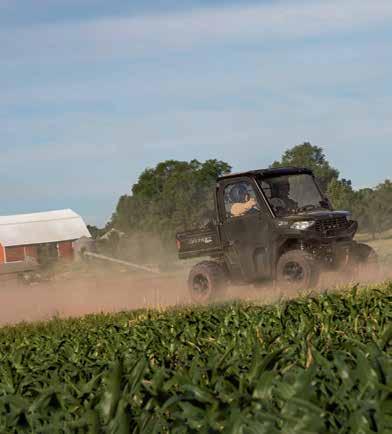
He says the partnership deals with methane and “turbo charging the commercialisation of tools within the toolbox of farmers to adjust inside the farm gate”.



He acknowledged meat companies Silver
Fern Farms and Anzco for contributing to the programme. With the election around the corner, MIA has stepped up its engagements with politicians.
Recently, it launched its election manifesto and in the coming weeks it will release a briefing for
incoming ministers.
Guy points out that dealing with red tape costs NZ meat processors and exporters $370m a year.
They also lose $200m a year on tariffs.
“These are mouthwatering numbers,” says Guy.
“We are doing everything possible to convince politicians of all parties what our main frustrations are, what they need to do as policy makers to support our sector,” he says.
The association has also reset its working relationship with the Ministry for Primary Industries (MPI).
A “bold” workplan has been agreed with MPI director-general Ray Smith, says Guy.
Guy and MIA chief executive Sirma Karapeeva are now meet-
ing Smith on a quarterly basis.

“Because I know, as a former Minister for Primary Industries, that things occasionally slip,” he says.
“If you have a big cyclone event, people at MPI get pulled off, you have a big event like M. bovis, staff get pulled off.
“So, we want to ensure we are keeping the feet to the fire so that MPI know that we need to work collaboratively with them to deal with challenges we face.”
Guy thanked the Government for two recent free trade agreements, with the UK and the EU.
He says the UK FTA is a comprehensive deal which is celebrated by the sector.
“But we remain disappointed by the opportunities lost with the EU one,” Guy says.
RURAL NEWS // AUGUST 15, 2023 8 NEWS
SUDESH KISSUN sudeshk@ruralnews.co.nz
POLARIS SPECIAL OFFERS *Offer ends 30/9/23 or while stocks last. Offer only available at participating Polaris Dealers. Not valid with any other offer. Excludes fleet clients. ^^Accessories offer only valid with the purchase of a new Ranger SP 530, Ranger 1000 EPS and Ranger 1000 EPS Premium. +Finance offer is only available on selected models. GST registered customers only. 24-month term contract. 20% Deposit required. Deposit may include Trade (Trade conditions apply). Fees and conditions apply (normal lending criteria applies) Finance is provided by Polaris Finance, a program operated by De Lage Landen Limited Company No 135515. SP 530 1000 EPS 1000 EPS PREMIUM 0800 440 290 | www.polarisnewzealand.com | /PolarisNZ | /polarisorv_nz 61 HP HIGH PERFORMANCE ON DEMAND TRUE ALL-WHEEL-DRIVE (AWD VERSATRAC TURF MODE ELECTRONIC POWER STEERING DUMP BOX CAPACITY454KG 1134KG TOWING CAPACITY 61 HP HIGH PERFORMANCE ON DEMAND TRUE ALL-WHEEL-DRIVE (AWD VERSATRAC TURF MODE ELECTRONIC POWER STEERING DUMP BOX CAPACITY454KG $1,000 FREE ACCESSORIES $19,995 FREE FARM KIT (VALUED AT $5,000) FARM PACK INCLUDES A ROOF, GLASS SCREEN, WIPER KIT, REAR PANEL & A TOW HITCH VALUED AT $5,000 FREE FARM KIT (VALUED AT $5,000) FARM PACK INCLUDES A ROOF, GLASS SCREEN, WIPER KIT, REAR PANEL & A TOW HITCH VALUED AT $5,000 $26,895 $28,265 6.99% FINANCE ON ALL SXS MODELS IN 12 MONTHS 1/3 1/3 IN 24 MONTHS Finance and accessories offer is available on a selection of in-stock models only, check with your participating Polaris Dealer for more details. Not valid with any other promotion. Excludes Fleet Clients. Finance is provided by Polaris Finance, a program operated by De Lage Landen Limited Company No 1355515 and available for business purposes only on a Hire Purchase Agreement. Credit approval, fees, terms and conditions apply. Finance rate is 6.99% and is based on a 24 month term, for full promotion details and structure please contact your Polaris Sales Representative. Delivery & Finance Settlement must be prior to 30th September 2023. *Terms and conditions apply. 32 HP ON DEMAND TRUE ALL-WHEELDRIVE (AWD) VERSATRAC TURF MODE IRS WITH 25.4CM OF TRAVEL DUMP BOX CAPACITY - 227KG 680KG TOWING CAPACITY 1134KG TOWING CAPACITY
Meat Industry Association chair Nathan Guy is not holding much hope for progress on HWEN before the general election.
Has NZ won the battle to fully eradicate M.Bovis?
AGRICULTURE AND Biosecurity Minister
Damien O’Connor claims the success of the M. bovis eradication programme has saved NZ billions of dollars.
O’Connor told Rural News that effectively eradicating the disease is a world first.
He says when the Government and its key partners – MPI, DairyNZ and Beef+Lamb NZ –decided back in 2018 to eradicate rather than control the disease, many people in the world thought it was embarking on an impossible mission.
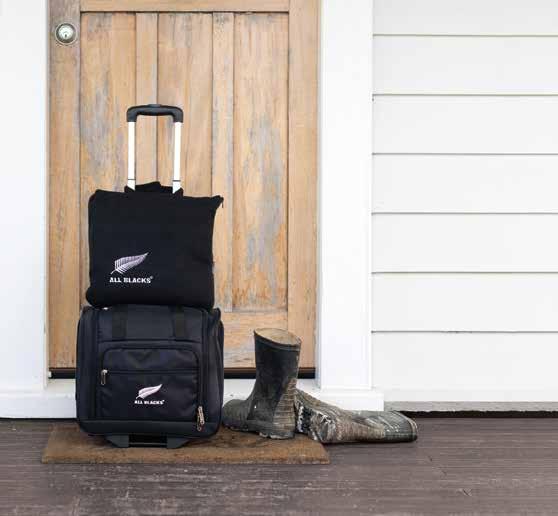
“But we have proved them wrong.”
As of now, the last known infected property in MidCanterbury has been destocked and declared disease-free, taking NZ to zero confirmed infections. O’Connor concedes it will be a few years before elimination can be confirmed. He says there have been brief periods in the past with no infections but with possible cases still being investigated.
“This is the first time we’ve had no cases and

no investigations, but it will take five more years to really confirm the absence of M. bovis in our herds.”
O’Connor says getting to this point is the result of hard work, sacrifice and collaboration between MPI, DairyNZ and Beef+Lamb NZ with the support of farmers and their families whose herds have been infected.
“I acknowledge the hardship which affected farmers and families have felt during this time,” he says.
In the course of the five year eradication programme, almost 184,000 cattle have been culled, 280 farms
FEDS PLEASED
FEDERATED FARMERS is describing the news as “marking a significant milestone” for eradicating M. bovis.
Feds president Wayne Langford says his organisation is cautiously optimistic that NZ has now turned a corner in the Mycoplasma bovis eradication efforts.
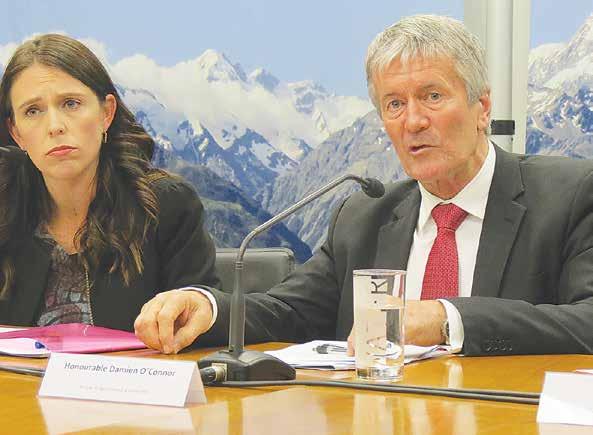
But he adds that they won’t be sure until bulk milk testing ramps up again in spring.

Langford says it’s been an incredibly challenging few years for the farming families whose animals have been infected and rural communities who have been
anxious about the spread of the disease.
“There’s been a big financial cost to try and eradicate this disease, but there’s been a big emotional cost too,” he told Rural News
“Farmers absolutely love their animals, so to lose your entire herd is just devastating. I hope those farmers who were impacted take real heart from the announcement and know it hasn’t all been for nothing.”
Langford says the job’s far from over, but all the indicators are pointing in the right direction.
depopulated and nearly 3000 farms subject to movement controls. The Government has paid out $247.6 million in compensation to affected farmers.
O’Connor says the overall cost of the eradication programme was in the order of $650 million dollars and was funded jointly by the industry bodies and government to do this.
“But the advice I had – and the observations
we saw in NZ from the effects on mastitis, lameness, abortion and the requirement to wind back the intensity of our farm systems – it would have cost $1.3 billion in lost production in the first 10 years alone,” he claims. “It would have also required us to change farm systems if we had to farm with bovis.”
O’Connor says no one else in the world had done an eradication programme. The team running it had to constantly adjust, improve, adapt and learn as they went along. He adds that they had to develop new tracing systems, which led to the improvement of NAIT.
While there are no new cases of M. bovis, O’Connor admits they can’t say yet that they’ve reached eradication as we may still detect new cases in the future. He says there will be an on-going surveillance programme. “But all the indicators – from the bulk milk testing to beef herd surveillance – give us confidence that the 10-year programme is working.”
RURAL NEWS // AUGUST 15, 2023 NEWS 9
peterb@ruralnews.co.nz
PETER BURKE
@rural_news facebook com/ruralnews
“This is the first time we’ve had no cases and no investigations, but it will take five more years to really confirm the absence of M. bovis in our herds.”
LET’S GO! PROUDLY AVAILABLE FROM YOUR LOCAL PARTICIPATING VETERINARY CLINIC See product label for full claim details and directions for use. Boehringer Ingelheim Animal Health New Zealand Limited. Level 3, 2 Osterley Way, Manukau, Auckland, New Zealand. EPRINEX® is a registered trademark of Boehringer Ingelheim Vetmedica GmbH, used under licence. Registered pursuant to the ACVM Act 1997, No. A007191. ©Copyright 2023 Boehringer Ingelheim Animal Health NZ Ltd. All rights reserved. ALL BLACKS® is a registered trademark of New Zealand Rugby Union Incorporated NZ. This promotion is in no way sponsored, endorsed or associated with the ALL BLACKS®. NZ-CAT-0023-2023. Never miss a match with the ultimate ALL BLACKS ® travel bag and cushion set yours with selected EPRINEX *Promo ends 30th September 2023. Ask in clinic for qualifying products. Scan here to calculate the R.O.I. for your herd... futureproducers.co.nz Ensure young stock become future high producers through improved health, growth and energy at:
Agriculture Minister Damien O’Connor and former PM Jacinda Ardern at the announcement of the M. Bovis eradication plan back in 2018.
Horticulture sector urged to back controversial emissions reduction plan
THE COUNTRY’S horticulturalists have been urged to get in behind the controversial He Waka Eke Noa (HWEN) agricultural emissions plan.
In a speech to the recent Horticulture Conference, Silver Fern Farms and Farmlands chair Rob Hewett claimed this would help play the sustainability card in wooing the world’s consumers. He says the world’s most affluent consumers increasingly care about their food’s origins.

“We’ve got to be relentless about chasing these affluent consumers,” Hewett added.

“We can feed about 40 million, and those 40 million, in my view, need to be the wealthiest people around the globe. I don’t care where they are, what they say, what they look like.”
That meant playing to their value set, which
PRAISE FOR TRADE BUREAUCRAT
HEWETT PRAISED the work done by the Ministry of Foreign Affairs and Trade – singling out trade negotiator Vangelis Vitalis.
He says Vitalis has done an outstanding job, “navigating that very wiggly and narrow path between China and the US”, and how we deal with foreign trade as a consequence of that.
“It’s a difficult space to occupy, but we have to occupy that space. We can’t afford to choose sides because there will be a net loss there for us as a trading partner.”
Hewett says Australia has quite clearly picked a side and has already seen some consequences in their trade with China.
He added that a rules-based trading environment really helps small countries like New Zealand. However, Hewett characterised New Zealand as a free-trade dinghy in an increasingly protectionist sea.
includes sustainability.
“He Waka Eke Noa is important,” Hewett says.
“We just need to do it. You need to track and trace what you do on your farm to verify to your consumers that what you say you do, and what you do, are the same thing.
“They can buy your
FRESHWATER FARM PLANS EXPLAINED with Groundswells Environmental Spokesperson Jamie McFadden
Waikato and Southland are the first regions to have this new legisla�on come in, from � August. Also an update on the SNA (significant natural areas) and Indigenous Biodiversity policies.
Jamie has read the legisla�on back to front and is coming to Waikato to tell you about the flaws and loop holes to be wary of the bits that the Regional Council won’t tell you! He is an independent consultant with over 25 years experience
MORRINSVILLE - 7pm Tue 15 August at the Rotary Community Hall
TE KUITI - 1pm Wed 16 August at the Waitete Rugby Club
TE AWAMUTU - 7pm Wed 16 August at the Te Awamutu Sports Club
Have you heard the Groundswell anthem?

Wri�en and performed by kiwi entertainer, John Wright - go to our website to listen !

product with confidence.”
Hewett believes New Zealanders take our advantages for granted.
“Consumers around the globe have got more envious of what we have here since they’ve had two years to think about it as they stared at their walls during lockdown.”


He conceded that New Zealand is not a cheap producer of food.
“But we are a producer of quality food. When you are a producer of expensive high quality food, you need to find the right
JACINDA FANBOY
HEWETT MAY have raised some farming sector eyebrows with his praise for Labour’s former Prime Minister, Jacinda Ardern.
“I can tell you now, Jacinda was our biggest marketing tool offshore during Covid,” he told the conference.
“She got us about a 5% Covid premium for New Zealand – that would be my estimate – and I think there’s about a 5% ‘grass-fed New Zealand’ premium as well.
“In a commodity space, this is really important.”
consumers who have the right value set, to then go in shamelessly and get the premiums off them.
“That means behaving
differently, but it’s worth it. And the counterfactual is if we don’t, we’ll be squashed by commodities.”
He added that it’s not just the products that we grow, but consumers’ perception that’s really important to leverage our “Brand New Zealand” story.
Hewett says it’s a matter of visibility of information for the consumer. Farmers and orchardists need to be able to say what they are doing, what they have applied, how they manage staff, and that they stand
“The clarity around our free trade environment, the fact that we have no subsidies and we have a clear line of sight to the markets and are responsive to those consumer needs, has stood us in good stead.”
behind their policies.
He invariably finds that while they are doing all this, but they’re not recording that they’re doing it.
“Consumers are increasingly asking for that.”
Hewett said the recent Free Trade Agreements with the UK and EU were good for New Zealand – although they gave little or nothing for the red meat and dairy sectors. He also questioned the worth of diversifying away from China and Asia towards markets that pay less.
Although there was a risk in concentrating on one market, China is the best paying market in the globe and it takes everything we can produce, he says.
“Being on the doorstep of such burgeoning


economies as Southeast Asia, particularly plays well into fruit and veg, in my view.”
Hewett says China has effectively outsourced large animal ruminant production because they don’t grow enough grass and importing feed is really expensive.
He noted that China has dairy farms (established by Fonterra but now sold to Australia) producing white milk for city consumption.
“But quite frankly, it’s a drop in the bucket of domestic demand up there and you could – not to put too fine a point on it – say it was window dressing.
“They need what we have here and they’ve outsourced it. They’re going to go really hard in other areas and horticulture is in that space.”
RURAL NEWS // AUGUST 15, 2023 10 NEWS
NIGEL MALTHUS
Read us until the cows come home! www.ruralnews.co.nz
World’s most powerful variable speed clipper is here! handypiece Get your Repairs and Servicing done NOW! ■ Ideal for shearing sheep, alpacas, goats and cow tails. ■ Variable speed from 2600-3500 rpm. ■ Latest brushless motor technology means minimal heat build up ■ 1400gms means 100-200gms lighter than standard handpiece.
At 2800 rpm the 12-volt lithium battery will crutch 300-400 sheep or
up to 400-500
Tough alloy switch box with auto rest fuse for
or lockup –
to
HELP US TO HELP YOU FOR THE NEW SEASON View in action go to www.handypiece.co.nz Freephone 0800 474 327 email: dave@handypiece.co.nz
Silver Fern Farms and Farmlands chair Rob Hewett has urged horticulturalists to back He waka Eke Noa.
■
trim
cow’s tails. ■
overload
clips
belt.
www.groundswellnz.co.nz
Costs, tax and inflation all impacting




tribute.”
“ABSOLUTELY BREATHTAKING” is how well known economist Cameron Bagrie describes the current rural inflation rate of around 15%.
Bagrie says this compares with general inflation of just over 7% and business inflation sitting at around 10%. He says the tell-tale indicator of what’s happening to the country is the tax take.
Bagrie points out that in the last three months the tax numbers have “massively undershot” government expectations, which is borne out on payments of provisional and terminal tax. He says this is showing a flaw in the ideology that you can pump more costs onto the rural sector and there will be no collateral damage.
“But there is collateral damage and the real story here is about costs,” Bagrie explains. “What we are seeing now is that ideologies are being checked by economic reality. The economic reality is a big wake-up call for the Government because if firms are not making money, they don’t pay tax and the Government doesn’t have enough money to redis-
IN BRIEF

Bagrie says it’s still early days and questions remain about what those numbers will look like in the future. He says, in the case of the primary sector, there is a need for a strong sales side and at the moment commodity prices are still volatile.
He says of all the sectors, the dairy industry to some degree has put itself in a more resilient position to counter this.
Bagrie believes this is because over the past five years, farmers have made a point of paying down a lot of debt.
He says the sector is still facing the double whammy of high inflation and higher costs, which are affecting their bottom lines. He adds that the sector has been helped a bit by the NZ dollar, but the banks have pulled back on their expectations of what the dairy payout may be.
Bagrie says the dairy industry, like all businesses in NZ, will have to ruthlessly look at their bottom lines, cutting costs and recalibrating their operations.

He says this will be hard, given some of the environmental challenges that farmers have got coming – along with the ideological-driven

FAR REFERENDUM
ARABLE FARMERS are being encouraged to vote before the August 23 deadline in a referendum, which will determine the future of the Foundation for Arable Research (FAR).
Voting papers were posted last month to farmers who grow arable grain and seed crops, maize and cereal silage. FAR is encouraging growers to use the online voting system, which is automatic and more secure. Postal and online voting in the referendum closes at 12 noon on August 23, with voting results expected on August 28.
Under the Commodity Levies Act, growers have the opportunity to vote to renew levy orders every six years. A ‘yes’ vote will ensure FAR’s continued existence, while a ‘no’ vote would result in the organisation being wound up, and all research and extension programmes ceasing.
FAR chief executive Alison Stewart is encouraging arable farmers to take the time to vote.
policy agenda that’s been coming out of Wellington.
“The reality is that
farmers won’t be paying as much tax and that will affect the economy.”



RURAL NEWS // AUGUST 15, 2023 NEWS 11
PETER BURKE peterb@ruralnews.co.nz
Economist Cameron Bagrie says the current rural inflation rate of around 15% is ‘absolutely breathtaking’.
www.cfmoto.co.nz Limited Edition Camo 800cc V-twin, 62hp Power steer Front bar & bonnet rack Headlight guards 3500lb winch Available in Camo 963cc V-twin, 71hp Two drive modes Power steer Hill descent control 800kg tow capacity 350kg rear tray capacity Available in Twilight Blue UFORCE RANGE CFORCE RANGE $19,490 EX GST $14,490 EX GST $15,490 NOW SAVE $1000 CFMOTO Mid Year Sale is valid from 01/06/2023 to 31/08/2023 or while stocks last. Ride away prices quoted exclude GST. Visit www.cfmoto.co.nz for more information. 400cc engine, 30hp Selectable 4WD Steel wheels Steel carrier racks Available in Sky Blue 400cc engine, 30hp Selectable 4WD Power steer Alloy wheels 2500lb winch Available in Lava Orange 495cc engine, 34hp Power steer LED headlights Alloy wheels 2500lb winch 5-inch display Available in Force Red 580cc engine, 40hp Power steer Front and rear diff lock Alloy wheels 2500lb winch Available in Velocity Grey $8,990 $9,990 EX GST EX GST NORTH ISLAND SOUTH ISLAND Andys Moto Services, Waiuku 027 944 5442 Brown Brothers Bikes, Whanganui 027 572 7696 Country Engineering, Tauranga 07 552 0071 Country Machinery, Sanson 06 329 3900 Darryl August Motorcycles, Taupo 07 378 8342 DP Williams, Gisborne 06 863 2612 Dr Moto, Tauranga 07 578 9902 Gatmans Mowers, Silverdale 09 426 5612 Hamilton Motorcycle Centre, Hamilton 07 849 1919 JC Motorcycles, Waitara 06 754 6420 Johnston’s, Inglewood 06 927 3566 Maungaturoto Motorcycles, Maungaturoto 09 431 8555 Action Sports Direct, Wanaka 07 928 8045 Ag & Auto Direct, Balclutha 03 418 0555 Ashburton Can Am, Ashburton 03 307 4846 Colin Clyne Motorcycles, Oamaru 03 437 0559 Dan’s Motor Centre, Geraldine 03 693 8536 Diesel Tech Machinery, Frenside 03 313 6465 Diesel Tech Machinery, Methven 03 302 8946 Franks Motorcycles. Mataura 03 203 7309 Ian Day Farm and Lifestyle, Alexandra 03 448 9007 Marlborough Motorcycles, Blenheim 03 579 2500 Nelson Motorcycles, Nelson 03 548 3786 Remarkable Motorcycles, Queenstown 03 441 4653 Motorcycle HQ, Pahiatua 06 376 7163 Northland Powersports, Whangarei 09 437 5451 NZ Motorcycle Importers, Upper Hutt 0210 828 9789 Outdoor Power, Hastings 06 878 2369 Peninsula Motorcycles, Thames 07 868 6104 RevTech Powersports, Stratford 06 765 7712 Rob Titter Farm Services, Kaikohe 09 401 1774 Rouse Motorcycles, Hikurangi 09 433 8471 Tahuna Motorcycles & ATVs, Tahuna 07 887 5790 Whyteline, Paeroa 07 862 8783 $7,490 EX GST $7,990 NOW SAVE $500 $11,490 EX GST $11,990 NOW SAVE $500 Now with the choice of four models in the UFORCE 600 range, the HUNT Edition is feature packed. Loaded with plenty of extras to enjoy the great outdoors, including UV-resistant camouflage wrap; dual snorkel kit, front protector bar, side and rear bars, and a half windscreen. OVER 30 DEALERS ACROSS THE COUNTRY ON NOW 580cc engine, 41hp Power steer Hill descent control Dual snorkel kit Front, rear & side bars Half windscreen 3500lb winch 680kg tow capacity 250kg tray capacity Available in Camo $16,490 EX GST $16,990 NOW SAVE $500 HUNT EDITION 580cc engine, 41hp Two drive modes Hill descent control Power steer LSD - rear limited slip differential 3500lb winch 680kg tow capacity 250kg rear tray capacity Available in Velocity Grey $15,490 EX GST
Farmers hoodwinked on emissions
SUDESH KISSUN sudeshk@ruralnews.co.nz
A FONTERRA shareholder says he doubts that consumers around the globe are clamouring
for products with a low carbon footprint.
Garry Reymer, Cambridge, claims some of the co-operative’s major customers are seeking to piggyback on Fon-
terra farmers’ low carbon footprint to meet their politically driven environmental obligations.
Reymer, Waikato Federated Farmers dairy chair, says consumers of


Fonterra products “just want a safe food that is high in protein at a good price”.
“We should not confuse consumers with customers,” he told Rural News
Reymer’s comments come as Fonterra prepares to unveil scope 3 targets – for farmers to reduce their greenhouse gas emissions behind the farm gate.
The co-op is warning that failure to tackle scope 3 emissions will lead to major customers and consumers walking away, and even embracing plant-based products.
Reymer says some of Fonterra’s customers in the Northern Hemisphere and the European Union are pushing a climate change agenda.
“Most of the greenhouse gas demand is government to government or government to business or B2B, but very rarely demanded by the consumer,” he says.
He says this was highlighted by a presentation at the recent Rabobank Farm2Fork conference in Sydney, where a cotton producer from South
Australia went to London to canvas how much more consumers would pay for sustainably produced cotton chinos over standard products.
“The answer came back 10 pounds – certainly not enough to cover the extra cost to produce,” Reymer says. “Most of our dairy exports go to the low value markets that Europe doesn’t want to or need to supply.”
He adds, if NZ needs to comply with European demands, we should also be able to compete
in their market so we can try to capture some value for our farmers.
“Everybody wants an organic or sustainably produced product until they get to the checkout counter then they just want cheap – except for a privileged few.”
Reymer says no one has yet been able to monetise GHG reductions to the farmer.
“It will only add cost.”
He says farmers are waiting to hear Fonterra’s plans on scope 3 emissions. “My pick is they will not be able to add
DEEP POCKETS FOR KIDS
Garden to Table curriculum and community relations manager
value to my bottom line. The same goes for banks and other industries that service farmers,” Reymer adds.
“Why you may ask has a bank not come out and said, ‘if your GHG emissions are ‘x’ you will pay this rate of interest and if it is ‘y’, you pay another’.
“But now they want us to reduce emissions at our cost to meet their scope 3 targets, so that they can say to the Government that they are going fine, but the producer’s margin is eroded.”
Strict quality control during manufacture is one thing. But it’s on Kiwi farms where the real testing is done.
And it’s there that the Suzuki DR200SE has proven itself for almost 30 years, consistently outselling other farm bikes in its class. And with this great offer, it’s set to continue.


Talk to your
dealer today.
AGRI BANKING specialist Rabobank and food education charity Garden to Table recently announced the launch of a new free teaching resource to develop money management skills among New Zealand children.
Rabobank New Zealand chief executive Todd Charteris says having teamed up with Garden to Table earlier in the year to develop and expand across New Zealand, the idea for the teaching resource – called Deep Pockets, Hōhonu te Pūkoro – stemmed from discussions about the ongoing development of the Garden to Table programme.
“Both organisations believe that learning basic money management skills is incredibly important and that these skills can help set up a young person for a successful future,” he says. “We discovered a gap in hands-on learning resources to support knowledge development in this area and decided to create a new teaching resource that connects learning to grow and cook food with improved financial literacy.”
Victoria Bernard says the current cost-of-living crisis – particularly the significant price increases for many food items – only reinforced their view that this type of resource was necessary.
“Generally, these types of resources are only made available to schools participating in the Garden to Table programme, but both parties felt it was important to open up access to a wider audience,” she says.
“The resource is targeted at Year 3 upward and we expect there will be plenty of interest in this, not just from primary schools, but intermediate and secondary schools too.”
The resource outlines a tenlesson teaching unit that helps students build their financial literacy skills by undertaking everyday garden and cooking activities, giving students the chance to handle real money, make financial decisions and produce a product to sell, then decide what to do with the profit earned.
“By the end of the unit, students will be able to complete a product plan, understand how borrowing
and investing works, use and understand financial terms and vocabulary, make and sell a product and write a basic financial report,” Charteris explains.
Bernard explains that as students move through the various lessons they are given the chance to take on roles like project manager, risk manager or marketing manager, helping to identify who might be best suited to certain roles and how they can work together as a team, all done in a low-risk context with guidance from their teacher.
“Schools already involved in the Garden to Table programme were given a heads-up that the resource was coming. Several have already indicated they’re planning to start the unit in August, [and] we’re also running a webinar for interested Garden to Table schools to talk them through the resource and answer any questions they might have.”
For schools not currently part of the Garden to Table programme, further information on the new teaching resource can be found at: https://gardentotable.org.nz/
RURAL NEWS // AUGUST 15, 2023 12 NEWS
Waikato dairy farmer Garry Reymer says no one has yet been able to monetise GHG reductions to the farmer.
LEO ARGENT @rural_news facebook com/ruralnews
suzuki .co.nz JAPANESE QUALITY KIWI PROVEN NZ’S FAVOURITE FARM BIKE FOR 28 YEARS. NO DEPOSIT, 12 MONTHS TO PAY,
INTEREST P.A. $6,086+GST SUZUKI DR200SE T&Cs: This no deposit and 4.99% interest rate offer is available on new Suzuki DR200SE financed from 1/8/23 – 31/10/23 at participating Suzuki dealers and is fixed for 12 months. A PPSR fee of $10.35, a monthly maintenance fee of $2, a UDC loan fee of $130 and a $200 dealer origination fee will apply. The loan is provided by UDC Finance Limited. UDC’s lending criteria and standard terms and conditions apply. TRACTA65990_DR200SE_RN
Suzuki
4.99%
Kiwis help Mongolian shearers sharpen their skills
MORE THAN 100 Mongolian sheep herders have advanced their shearing skills following a recent visit by the New Zealand shearing training initiative Share Mongolia.
Established in 2020 to introduce modern shearing techniques and equipment to Mongolia, the first courses were trialled in Mongolia last year. The latest courses took place during June and July with a 12-strong touring party composed of Rabobank staff and New Zealand farmers.

A recent UNIDO (United Nations Industrial Development Organisation) report found that up to 9000 tons of Mongolian wool was wasted each year due to limited resources and capacity and that machine shearing could create 4000 jobs.
Paul Brough, Rabobank agribusiness manager and a leading figure in the programme’s formation, says the team –split into three groups to expand their reach – was able to deliver seven fiveday courses to 112 Mongolian herders across seven provinces.
“There was a good mix of ages, with some herders returning for their second year of training, and several women also participating,” Brough explained.
“The majority had little or no experience with machine shears, but they picked up using the electronic handpiece really well. By the end, most were able to shear a sheep in five minutes –much quicker than the 25 minutes they were taking at the start.”

While in Mongolia, the New Zealand touring party lived with local herders, sleeping in gers (tent dwellings) and learning about local culture and traditions, including taking part in the Naadam festivals (Mongolia’s biggest holiday).
Brough says with
an estimated 30 million sheep in Mongolia, there is huge scope for improving economic income by sharing New Zealand farming knowledge and expertise. He adds that the programme is now attracting interest of overseas companies keen to source Mongolian wool.
The touring party was joined on their travels by the four Mongolian herders who had visited New Zealand earlier this year as part of the initiative. They took on assistant training roles in the latest round of courses and helped with the language barrier.
Brough said it was great to see Budee, Baaska, Ama and Khanda again, visit their homes and spend a couple of nights with their families.
“Khanda and Ama have started a commercial shearing business
together utilising one of the mobile shearing trailers we set them up with. Meanwhile, Baaska and Budee are also working as shearers in their local regions,” he added.
“The skills and money they acquired during their trip to New Zealand has had a huge impact on their lives and they are now wealthy people by local standards.”
Now shearing up to 200 sheep a day compared to the 25 prior to their New Zealand visit, means their quicker shearing means it is now economically viable to shear lambs, adding even more value to the herds.
Brough believes that with a bit more time, the goal is to have the four of them run the training courses themselves.
Brough says planning is already under way for courses in 2024 which might expand to cover
other topics including wool handling, pressing and other animal health practises such as sheep dipping.
“A lot of the herders who attended the courses are very keen to come to New Zealand for a stint working here.

“If we can raise the funding, we could have up to 10 herders heading over this way early next year.”
Each areas course participants have been left with five shearing machines and a grinder to put their new skills into practice. Share Mongolia aims to raise more funds to supply more shearing equipment in the months ahead to fill local needs.
RURAL NEWS // AUGUST 15, 2023 NEWS 13
LEO ARGENT
“The majority had little or no experience with machine shears, but they picked up using the electronic handpiece really well. By the end, most were able to shear a sheep in five minutes – much quicker than the 25 minutes they were taking at the start.”
2024 Edna Calendar T: 09-307 0399 then press 1 to be put through to reception E: julieb@ruralnews.co.nz ❱❱ $25 including post & packaging ❱❱ 12 of Edna’s best cartoons ❱❱ 330mm x 240mm, spiral bound ORDER NOW! EDNA!! EDNA CALENDAR 2024 “We’re going fishing and I’ve got Edna driving the
up and
to charge its battery.” “Help! – someone just set Ag sector plans to slash methane emissions back ten years!” RURAL NEWS HORTNEWS SUNDAY MONDAY TUESDAY WEDNESDAY THURSDAY FRIDAY SATURDAY 1 2 3 4 5 6 7 8 9 10 11 12 13 14 15 16 17 18 19 20 21 22 23 24 25 26 27 28 29 FEBRUARY 2024 JANUARY 5 16 27 17 28 NORTHLAND SOUTHERN
A recent visit by the New Zealand shearing training initiative Share Mongolia helped around 100 local sheep herders improve their shearing skills.
boat
down
Prices and weather collide
Dairy
THE UNDERLYING fundamentals to the global commodity market remain soft.
Through July, Oceania spot commodity prices fell across the board. The biggest falls were in cheese and butter as US dollar prices converge between the export regions.
Across the complex, most prices are below
five year averages. The next phase of the cycle is still reliant on more volume purchasing from Chinese buyers. averages. The next phase of the cycle is still reliant on more volume purchasing from Chinese buyers. However, the supply outlook is still not strong and is now faced with negative weather impacts and tightening farm margins as feed costs rally.
RaboResearch still expects New Zealand to post growth in milk supply over the course of the season, albeit at a modest rate below 1%.
Beef
ALTHOUGH PRODUCTION and export volumes remain similar to the 2021/22 season, increased competition from cheaper and higher volumes of Australian
product into key markets is having a dampening effect on New Zealand prices. The NI bull price dropped 4% and SI bull prices dropped 3%



between the end of June and the end of July, taking the NI prices to almost the same as the five year average.
North Island store prices saw larger drops
with R1 Friesian bulls dropping 8% to NZD 3.55/ kg lwt but they remain 8% higher than at the same time last year. Beef production volumes are expected to start declin-
ing, helping to provide a floor for pricing over the next month.
The clear challenge to schedules remains increased competition from Australian product in the global markets.

Sheepmeat
SCHEDULE PRICES for
North and South Island lambs continued to fall through July down 7% from the start to the end of the month contrary to what would normally be happening at this time of year. High domestic volumes, strong global competition from Australia, and soft consumer markets are all taking their toll on prices. The South Island lamb price was NZ$ 7.05/kg on 28 July getting close to the lowest price in the last five years for this time of year. The
RURAL NEWS // AUGUST 15, 2023 14 MARKETS & TRENDS Content supplied by Rabobank - Growing a Better New Zealand Together farmers to connect with worldwide 100,000 Rabobank supports clients from farm to fork in 40 COUNTRIES 12630 global agribusiness research analysts sharing market outlooks
NOW READ IT ONLINE READING THE PAPER ONLINE HAS NEVER BEEN EASIER. ■ BREAKING NEWS ■ MACHINERY REVIEWS ■ MARKETS & TRENDS ■ MANAGEMENT STORIES ■ COMPETITIONS ■ AND MUCH MORE... www.ruralnews.co.nz RURALNEWS HEADER Ferist et quati aut pedici te vollab imod quamet atur soleniet quiatibu. PAGE 15 HEADER Ferist et quati aut pedici te vollab imod quamet atur soleniet quiatibu. PAGE 23 HEADER Ferist et quati aut pedici te vollab imod quamet atur soleniet quiatibu. PAGE 24 TO ALL FARMERS, FOR ALL FARMERS
normal seasonal contraction in supply of lambs in August and September should provide some price support and possibly stop the fall in prices.

However, the weaker global markets, full supply chains, and strong competition are likely to mean prices remain soft over the coming months.
Farm inputs
FOR THE coming months, international fertiliser prices are poised
to decrease or remain stable, but not without ups and downs along the track.
Despite production reductions since early 2023, supply is still greater than demand, putting pressure on prices, even now during the South American restocking period. Hopefully, Oceania will be able to piggyback on these lower prices later in the year. Compared to a year
ago, we have the energy crisis under control, but not solved, and soft commodities have come down from their record prices.
These developments have pulled fertiliser and agrochemical consumption down, levering the seesaw on the supply side.
Since January 2023, international prices for urea dropped by 15%, DAP is down 35%, potash decreased by 39%, and glyphosate fell massively by 45%.
Still, during the second half of July urea surged by 29% MOM, closely following natural gas prices in Europe, which rose 30% in the same period. It will not be a surprise to see a substantial percentage decrease in the near future after these elements fade away.
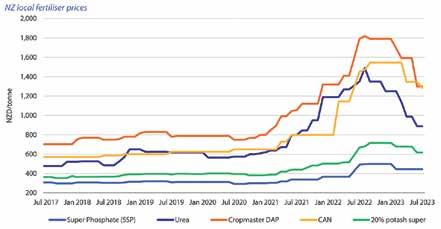
Interest and exchange rates
FUTURE MARKETS
now suggest a 29% probability of a further 25bps hike in the OCR by
November this year. This was driven by firmer than expected inflation in the second quarter of the
year.
Figures released in July suggested that prices grew by 6% over the last 12 months, which was a touch faster than the 5.9% growth rate expected by the market.
Even more critically, non-tradeable inflation was 1.3% in the quarter versus expectations of just 1%, while tradeable inflation was actually one tick lower than expected at 0.8% QOQ.
The economy is still dealing with the aftereffects of natural disasters earlier in the year, but there are signs that we may now be through the worst of things.
Unemployment is expected to lift gradually from current record lows as firms begin to shed excess labour after years of finding it difficult to find workers.
We maintain our forecast that the RBNZ will keep rates on hold at 5.5% for the rest of the year. @rural_news


RURAL NEWS // AUGUST 15, 2023 MARKETS & TRENDS 15 Rabobank supports clients from farm to fork in 40 COUNTRIES agribusiness analysts market outlooks Content supplied by Rabobank - Growing a Better New Zealand Together
com/ruralnews Enjoy 4 months half price when you sign up to a Farmside RBI Broadband plan for 24 months. Great great big broadband rural at a discount. TRACTA65982_ AUGUST 4 MONTHS_RN *Ts & Cs apply. RBI Wireless Broadband 200GB $47.99 RBI Wireless Broadband 400GB $62.99 RBI Wireless Broadband for rural Kiwis. Call 0800 32 76 74 or visit farmside.co.nz per month for the first 4 months* per month for the first 4 months*
facebook
Co-ops at heart of NZ agri
Co-operatives play a huge role in New Zealand’s economy, generating 18% of the country’s GDP by revenue. For the agricultural sector, the impact is even greater: 75% of NZ co-operatives are involved in the agri sector. In the first of four articles, Rural News looks at challenges facing these businesses, along with the opportunities presented by the co-operative model:
THE STATISTICS are staggering: 330 co-operatives, generating 18% of NZ’s gross domestic product by revenue, co-op and mutual businesses owned by over 1.5 million members and shareholders, employing 15% of the total workforce in the country.
In 2014, the International Co-operative Alliance (ICA) declared New Zealand the most cooperative economy globally. NZ co-operatives
continue to be showcased in the Top 300 World Co-op Monitor – including Fonterra, Zespri, Foodstuffs North Island, Foodstuffs South Island, Alliance Group, Silver Fern Farms and Farmlands.
However, while our co-operatives are considered business stars overseas, within NZ there is a lack of understanding of the business model.
Alongside the important role these businesses play
in our communities and the economy. There is also a lot of misinformation about co-ops.
Two years ago, the umbrella body for cooperatives – Co-operative Business NZ – undertook research with PwC “to showcase the scale of this business community”.
“Scarily, individuals who should know, or need to know, have limited knowledge,” says Co-operative Business NZ chief executive Roz
A BIG PART OF AGRI-SECTOR
ONE CANNOT talk about the New Zealand ag sector without discussing co-operatives – they go hand-in-hand.
Nearly 75% of NZ co-operative and mutual businesses are directly involved in the primary sector. The list is impressive: Fonterra, Tatua, Dairy Goat Co-op, MG Marketing, Alliance, Silver Fern Farms, Zespri, Marlborough Grapes Co-op, NZ Blackcurrants, Boysenberries NZ, Primary Wool Growers Co-op and NZ Hops.
Then there are those businesses providing the wrap-around support such as LIC, Farmlands, RuralCo, Ballance, FMG, Eastpack, Ravensdown, Birchwood Packhouse, irrigation co-op’s, SBS Bank, The Co-op Bank, Credit Unions and Rabobank.
Roz Henry points out that during the pandemic these businesses were all classified as essential services.
“They are fundamental to our food supply. Not only here in New Zealand, but also for our key trading partners.”
She says when compared to other business structures, they are highly resilient, especially during times of adversity such as Covid and our recent weather events.
“Due to the shareholders having skin in the game, they tend to hunker down and support each other to ride out the tough times.
“This is because their fundamental values ensure thinking longer term horizons, that is, maximising profits is secondary to prioritising their member’s needs, so the peaks and troughs are shallower.”
In the second article we will talk to former Fonterra director and co-op model champion Nicola Shadbolt.
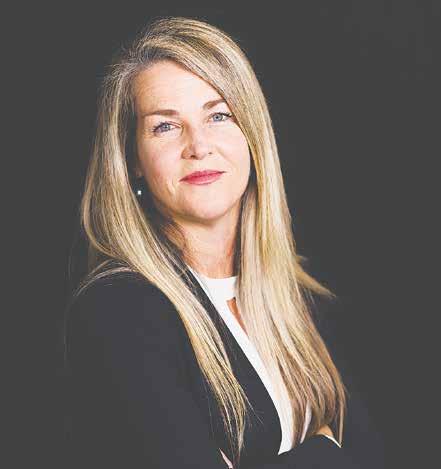
Henry. “This is something that I am constantly amazed at and working to resolve.”
Henry points out that it hosts multiple engagements with the various political parties and ministries.
“A significant proportion of the time is spent building an understanding of this business model and the businesses themselves to change their underlying misconceptions.”
She believes this is required before we can even start to consider the opportunities they present.
Henry believes co-ops are purpose led busi-
nesses, who prioritise people and planet over profits. These will be key enablers to driving change to support delivering against environmental, social and governance (ESG) reporting requirements (which are starting to be mandated by consumers).
“Along with delivery on the UN’s Sustainable Development Goal’s (SDG) goals, which have become critical in today’s environment,” she adds.
So, why are co-operatives facing challenges like misinformation?
Henry puts this down to fundamentally the lack of education and

understanding about the model.
She says policy makers subsequently put in place blanket policy that has the potential to stifle the ability of these businesses to compete.
Henry believes a riskbased approach to their operation, given they are far more resilient than many of their counterparts, would be a better approach.
“Compliance costs –like fair pay, carbon emissions and environmental, social and governance (ESG) – are coming thick and fast with little insight into how this is pushing many of these co-op members businesses to
financial brink,” she says. “Instead, the government should offer up incentives to enable investment into innovation and R&D, i.e. more carrot and less stick.”
“Our larger members in the agri sector are taking a leadership role to get ahead of the regulatory environment, in particular around carbon emissions. Given the long-term focus on sustainability and the alignment between the co-op businesses and their owners’ objectives, this is viable.”
Henry notes that many of these businesses’ boards are made up of member directors voted on democratically by their shareholders.
“Given this, there is always the potential for individuals to be voted on without the pre-requisite skills.
“Also, some in the lending community have little appreciation of the model, so when it comes to accessing funds, they are not always recognised as low-risk investments.
“A particular challenge which is not solely relevant to the co-operative sector is the need to change on farm practices at speed,” Henry adds.
“New Zealand is a leader in the primary sector and our farmers are some of the best. However, we need to keep pushing for change to remain competitive in the current climate.”
RURAL NEWS // AUGUST 15, 2023 16 AGRIBUSINESS
Co-operative Business NZ chief executive Roz Henry believes there is a fundamental lack of education and understanding about the co-operative business model.
New support to back farmers and growers in cyclone recovery
A substantial financial support package aims to help farmers, growers, and whenua Māori owners navigate a pathway to recovery in the wake of the extreme weather events that swept the North Island.
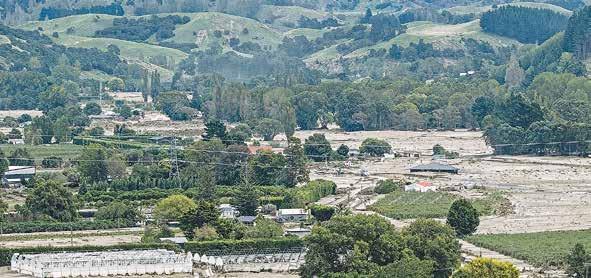
Primary producers severely affected by North Island Weather Events (NIWE) in early 2023 – including Cyclone Gabrielle – will get improved access to cheaper lending finance to ensure the longterm survival of critical regional industries.
It is made up of two different schemes, each designed to help ease the pressures and stress facing businesses looking to continue their recovery and provide ongoing employment for their staff.
The schemes have recently opened for applications, and are available to businesses in Northland, Auckland, Waikato, Bay of Plenty, Tairāwhiti, Hawke’s Bay, Tararua, and Wairarapa.
These measures were developed in consultation with primary producers and will provide relief to key growers, farmers, and businesses.
The North Island Weather Events (NIWE) Loan Guarantee Scheme enables commercial lenders to provide loans with more favourable terms to highly affected businesses across all sectors.
This scheme leverages the
GETTY IMAGES
Crown’s financial strength by carrying 80 percent of the credit risk on covered loans, allowing banks to reduce interest rates and offer more flexible terms.
The Government’s underwriting will support loans of up to five years agreed by businesses and their banks of up to $10 million, including the refinancing of existing loans.
Over the five years the scheme is in place, these savings could total between $45,000 and $225,000 for a firm with an average amount of debt, which is meaningful relief for businesses in need of confidence for their immediate outlook.
The loan guarantee scheme is
being administered by the New Zealand Export Credit Office, and is implemented by commercial lenders, such as banks.
The North Island Weather Events (NIWE) Primary Producer Finance Scheme targets businesses that have been severely affected by the weather events and have a reasonable likelihood of being commercially viable but cannot currently access commercial lending.
Concessionary loans and equity finance up to $4 million per business will be provided for eligible land-based primary sector producers from a total pool of $240 million.
Crucial boost to reduce emissions
Research and development into agricultural emissions reduction is getting a boost, with several new promising technologies being funded.
The Centre for Climate Action on Agricultural Emissions was launched in November 2022 to accelerate the research, development, and commercialisation of technology and practices to reduce emissions.

It has two key components:
1. AgriZeroNZ is a joint venture partnership and investment fund between the Government and major agribusness companies - Fonterra, Synlait, Silver Fern Farms, Ravensdown, Rabobank and ANZCO Foods.
2. The New Zealand Agricultural Greenhouse Gas Research Centre (NZAGRC).
So far, the Centre has invested more than $54 million into new tools and technologies to reduce agricultural emissions. That includes funding to help develop a methane inhibit-
ing bolus, further research into methane vaccines, a project that will increase our supply of low methane rams through genetic selection, and further research on the effect plantain has on nitrous oxide emissions.
To ensure we have a pipeline of new technologies now and in the future, the Centre has also funded urgently required greenhouse gas measurement equipment and infrastructure, and a fellowship and scholarship programme that will support 15 PhD students and 12 post-doctoral students over six years.
The latest project funded is a new greenhouse gas testing facility to be constructed at the Massey University dairy farm in Palmerston North.
These investments will help build momentum in getting tools in the hands of farmers sooner as we move towards our goal of biogenic methane reduction of
10 percent by 2030, and 24 to 47 percent by 2050.
AgriZeroNZ has confirmed three investments worth more than $8 million. About $1.8 million will go towards Ruminant BioTech, a New Zealand-based start-up developing a slow-release, biodegradable methane-inhibiting bolus, up to $2.5 million to support the methane vaccine and inhibitor research work, and $4 million towards the greenhouse gas testing facility.
AgriZeroNZ executive director Wayne McNee says the JV is working to ensure all farmers in Aotearoa New Zealand have equitable access to affordable, effective tools to reduce their biogenic methane and nitrous oxide emissions – supporting a 30% reduction of emissions by 2030 and enabling the development and adoption of solutions to drive towards ‘near-zero’ by 2040.
To be eligible, a business must have incurred losses of 30 percent or more of their uninsurable productive capacity because of the NIWE and can demonstrate that it has a reasonable prospect of returning to viability with additional support.
This assistance will provide certainty for rural communities by ensuring that businesses that employ thousands of people across cyclone-affected regions are supported to continue operating.
The scheme went live on July 31 and will be open for applications until September 11.
The NIWE Primary Producer Finance Scheme is being adminis-
“Our role is to take the pressure off Kiwi farmers. We’ve brought together many of the largest players in industry and government to do this, as well as working with the NZAGRC. Together, we are driven by an ambition to accelerate the reduction of agricultural emissions and we’re focused on getting tools into farmers’ hands to do this.
“New Zealand’s global customers are setting ambitious greenhouse gas reduction targets – we must confront this reality and I believe we can meet this challenge.
“Our success will drive the continued success of New Zealand agriculture, while contributing to New Zealand’s broader efforts to reduce greenhouse-gas emissions.”
To find out more about the projects funded as part of the Centre go to www.ccaae.govt.nz • For more information about AgriZeroNZ go to www.agrizero.nz
tered by the Kānoa Regional Economic Development & Investment Unit.
In other support, the Ministry for Primary Industries recently provided $500,000 in funding to the Post Your Support initiative, a community campaign supporting farmers and growers to repair cyclone-damaged fences and growing structures.
That backing will support farmers and growers to repair and replace essential infrastructure on farms and orchards, with funds going towards materials such as posts and wires. This will ensure essential agriculture and horticulture businesses can get back to their normal mahi quicker.
Rural Support Trusts will also receive $1.9 million to boost recovery efforts, including wellbeing support. It’s part of $35.4 million allocated in Budget 2023 to support rural communities with health and safety, wellbeing, and animal welfare. The funds sit alongside other support for cyclone-affected primary producers, including $74 million already allocated for farmer and grower recovery grants.
For more information, including details on eligibility criteria, visit: https://bit.ly/FinanceScheme https://bit.ly/LoanGuarantee
M.BOVIS CONSULTATION
A proposal is being made to change how the Mycoplasma bovis (M. bovis) Eradication Programme is administered. As the eradication effort enters a new phase, evolving the programme will ensure it continues to adapt to the work that remains ahead.
While it is expected farmers and rural groups will notice very little difference under the proposed model, we are inviting farmers and the public to give feedback.
Public consultation runs from August 14 to September 25. More information can be found under the Consultations section of the MPI website, www.mpi.govt.nz.

There are currently zero infected farms.
PRIMARY PODCAST
MPI has launched Primary Matters, a podcast about the food and fibre sector, the people at the heart of it, the efforts to keep it thriving and safe, and to showcase the wide array of interesting roles in the sector to potential workers. Episodes have focused on young people joining the primary sector, unusual yet crucial careers to protect the sector in Aotearoa New Zealand, and strong wool. Future episodes will feature new projects, issues, research and people working on the land, at sea and in our forests.
The podcast is available on all major apps, and at: shows.acast.com/primary-matters/episodes
www.mpi.govt.nz | PH 0800 008 333 | PAID CONTENT MPI Update
Substantial support is available to highly affected farmers and growers after the extreme weather events earlier this year.
Talk verses reality!
THE COUNTRY is in the midst of a frantic rush as politicians of all creeds, shapes and sizes emerge from the woodwork to ply the gullible public with a range of seemingly attractive but basically undeliverable promises.
These promises are flying around like paper in a Wellington southerly – going nowhere and often making little sense. There are questions about all these wonderful ideas being bandied about at a time when there are very serious doubts about the ability of any government to pay for such promises.
How many politicians are actually following what’s happening to the prices we are getting for our primary exports? Are they aware that lamb, beef and dairy prices have slumped and that on-farm costs have skyrocketed? Do they realise that when agriculture starts to fall over, so does the rest of the country?
How many of them have visited farms and orchards in Hawke’s Bay, Tairāwhiti and Northland and personally seen the devastation caused by cyclones Hale and Gabrielle and other lower profile, but equally destructive adverse weather events? Do they realise that it will take some farmers and orchardists more than a decade to get back to where they should be? And finally, do they realise that if farm incomes are down, the rural tax take will be lower, so there will less money for any government to spend?
Economist Cameron Bagrie rightly points out the tax take now has dropped markedly and will likely continue this spiral down unless export markets pick up and farm costs drop. Regardless of this, farmers and orchardists need capital to repair their land and infrastructure and this will take years.
So where will the money come from to pay for some of fantasies of desperately job seeking politicians? Will cutting jobs in the public service save money? Maybe yes, but unemployment will probably rise.
The offer of free dental care from a toothless political party is interesting, to say the least, while Auckland and Wellington – it seems – are going to get all the tunnels and bridges they don’t need.
So far, the election promises are mainly urban based, which is fine. However, the engine room of the country is not in the glass towers of the cities, but in the rural heartland.
Has any aspiring politician realised that yet and – better still – got any ideas on what to do next?

HEAD OFFICE POSTAL ADDRESS: PO Box 331100, Takapuna, Auckland 0740 Phone 09-307 0399
PUBLISHER: Brian Hight Ph 09 307 0399
GENERAL MANAGER: Adam Fricker Ph 021-842 226

CONSULTING EDITOR: David Anderson Ph 09 307 0399 davida@ruralnews.co.nz

“Apart from that, it says here, farm methane emissions are no threat to the environment.”

Unlucky country!
The Hound reckons our government and its wokester surrogates’ current obsession with re-hashing past Māori grievances and implementing things like cogovernance is doing more harm to race relations in the country than the opposite. However, it seems that NZ is not the only country going down this lonely track. Our cousins across the pond seem to be taking a similar route with inner-city, liberal elites and the political class wanting to impose silly politically correct regulations on its farming sector. A good example is West Australia’s state government, which is trying to introduce a law that will see farmers wanting to make changes on their land first having to seek approval from an ‘indigenous elder’. In practice, farmers will require such elder approval to dig a fencepost, build a new shed or even remove sediment from a dam on their properties – all adding time and costs to such activities.
PRODUCTION:
Becky
REPORTERS: Sudesh Kissun
MACHINERY
Don’t forget!
Yours truly sees that the political phoenix that is Winston Peters is again trying to make a return to parliament. Peters recently unveiled NZ First’s slogan for this year’s election… ‘Take our country back’. I am sure many readers of this column would like Peters to ‘take our country back’ to September 2017 when he signed up with Labour and started the train wreck of the past 6 years. While the wily old campaigner would like to downplay his part in creating the mess we now have running the joint, it is actually his fault entirely and this should not be forgotten.
Unhealthy!
A mate of your canine crusader reckons all those proponents of a vegan diet and claims of its ‘healthy’ impacts should take a lesson of the recent demise of a social media influencer. Zhanna Samsonova, a Russian blogger who regularly posted about her diet and extolled the virtues of a vegan diet of only raw tropical fruit, has died – reportedly of malnutrition, exhaustion and infections. The 39-year-old claimed she had not drunk water for six years, drinking fruit and vegetable juices instead. Living off fruit, fruit juices and fruit smoothies, she appeared increasingly thin and gaunt in the photographs she posted online. She looked like “a walking skeleton”, one Russian news outlet reported. Perhaps if the ‘influencer’ had had a bit more balance in her diet – including meat and dairy – things might not have turned out so badly for her.
AUCKLAND SALES REPRESENTATIVE: Stephen Pollard Ph 021 963 166 stephenp@ruralnews.co.nz
WAIKATO SALES REPRESENTATIVE: Lisa Wise Ph 027 369 9218 lisaw@ruralnews.co.nz
Fat chance!
This old mutt is dumbfounded by the ill-informed claims made by some media commentators that wannabe ACT PM and former Fed Farmers boss Andrew Hoggard will be the Minister of Agriculture in a possible National/ACT coalition government, should they get across the line on October 14. As one insider told yours truly, these supposed ‘informed’ commentators should spend less time interviewing their typewriters and get out and talk to people in the know. It is understood that the many rural candidates and MPs in National reckon claims that Hoggard would be elevated straight into the ag portfolio in any Nat/ACT coalition are about as fanciful as Green MP Chloe Swarbrick getting the job. The Nats are fighting hard to regain the rural vote and are highly unlikely to give their junior coalition partner the gold-plated job of Ag Minister in any government they are part of.
WELLINGTON SALES REPRESENTATIVE: Ron Mackay Ph 021 453 914 ronm@ruralnews.co.nz
SOUTH ISLAND SALES REPRESENTATIVE: Kaye Sutherland Ph 021 221 1994 kayes@ruralnews.co.nz
DIGITAL STRATEGIST: Jessica Marshall Ph 021 0232 6446
RURAL NEWS // AUGUST 15, 2023 18 OPINION EDITORIAL EDNA THE HOUND Want to share your opinion or gossip with the Hound? Send your emails to: hound@ruralnews.co.nz Not funded by NZ On Air
Rural News is published by Rural News Group Ltd. All editorial copy and photographs are subject to copyright and may not be reproduced without prior written permission of the publisher. Opinions or comments expressed within this publication are not necessarily those of staff, management or directors of Rural News Group Ltd.
Dave Ferguson Ph 027 272 5372 davef@ruralnews.co.nz
Williams Ph 021 100 4381 beckyw@ruralnews.co.nz
Ph 021 963 177
Peter
Ph 021 224 2184
sudeshk@ruralnews.co.nz
Burke
peterb@ruralnews.co.nz
Ph 021 906 723
RURALNEWS TO ALL FARMERS, FOR ALL FARMERS
EDITOR: Mark Daniel
markd@ruralnews.co.nz
PRINTED BY INKWISE DISTRIBUTED BY REACHMEDIA
Farmers are being hit hard!
letters going to hardworking farmers.
FONTERRA’S RECENT announcement that the milk price will drop to $7/kg – on top of falling lamb and beef schedules – is devastating news for farmers.
With the forecast dairy payout falling, and lower lamb and beef prices, many farmers face a season of losses with their books going into the red. Rising interest rates and Labour’s excessive regulation of the rural sector means many dairy

National will stop resource consents for winter grazing and scrap winter grazing slope rules in favour of a catchment approach.
Our Getting Back to Farming policy includes a commitment to defer central government rules requiring resource consents for winter grazing until freshwater farm plans are in place.
Meanwhile, another major concern for the farming sector is Labour’s
The Government must take urgent action to get farmers’ costs down. It should rein in its ill-disciplined spending and stop their assault on farmers.
farmers now need $8.20/ kg just to break even.
The Government must take urgent action to get farmers’ costs down. It should rein in its illdisciplined spending and stop their assault on farmers. Six years of piling on costs for farming has increased the price of food and put farmers and the New Zealand economy at risk.
A prime example is how farmers and their stock have been caught in a stressful bureaucratic nightmare created by Labour. As part of the current Government’s regulation overload, farmers must have a farm plan for winter grazing – or apply for a resource consent.
The problem is that after three years and two postponements, the Government still has not finalised rules for farm plans. This delay has caught out some farmers who are now receiving legal letters from the regional council to immediately stop winter grazing. ’Cease and desist’ letters are only the most recent example of the massive bureaucratic load that Labour has imposed on this country’s largest exporters.
The solution is simple: the Government should hit pause on its winter grazing regulations until it has finalised its farm plan rules. That would avoid the need for consents and stop legal
fundamentally different, National will take a split-gas approach to emissions. We will review methane targets to ensure their consistency with no additional warming from agriculture.
New Zealand contributes 0.2% of global emissions. National is confident we can reach
our climate goals by reducing agricultural emissions without closing down a sector that contributes over $40 billion to the New Zealand economy. A strong agriculture sector means a strong New Zealand economy.
Our ‘Getting Back to Farming’ policy is

targeted at cutting through Labour’s red tape, bringing down costs, and building an economy that values the importance of our rural sector.
National is proud to back New Zealand’s world-leading farmers.
• Todd McClay is National’s agriculture spokesman

You’re walking a paddock, thinking about today’s tasks, or planning for the season ahead. What’s on your mind may be new cropping or pasture options, updating your animal health plan, how to add five percent to your weaning weights, or what feed supplements to choose.
A fresh perspective.
proposals for emissions reductions.
National is committed to reaching Net Zero by 2050, but we believe New Zealand’s path to emission reductions in agriculture is through technology, not less production.
A National government will remove the ban on gene technology, which will help give farmers the tools they need to reduce methane emissions – such as gene edited crops, feed, and livestock.
We will also give farmers the tools they need to reduce emissions, including recognising on-farm sequestration, measuring farm level emissions by 2025 and updating biotech rules.
National will keep agriculture out of the ETS but implement a fair and sustainable pricing system for on-farm agricultural emissions by 2030 at the latest. An independent board – with a power of veto retained by the Ministers of Climate Change and Agriculture – will be established to implement the pricing system.
We will also limit the conversion of productive farmland to forestry for carbon farming purposes to protect local communities and food production.
Recognising that the environmental impacts of carbon dioxide and methane are
Whether it’s about bouncing ideas, seeking technical advice, or looking after crops through the season, that’s where your local Rural Supplies Representative comes in. Our representatives bring a fresh perspective and whole farm understanding to the table and can help take the load off.
RURAL NEWS // AUGUST 15, 2023 OPINION 19
TODD M c LAY
Working alongside you, every season of the year.
Todd McClay says a National-led government will cut regulation and back farmers.
Find your rep, go online to store.pggwrightson.co.nz
A true test of character
THE GREAT Wall Of China is said to be one of the Seven Wonders of the Ancient World.
While I have not actually personally visited ‘The Wall’, I have seen quite a few pics and read up on many of its details.
Apparently, construction continued in one
form or another for more than 2000 years, beginning somewhere in the 7th century BC. We can only imagine the details and planning that went into this over such a long period of time. Maybe the first 300 years were simply swallowed up getting all the necessary con-
sents signed off – surely vital for such a vast undertaking!
The distance in total stretches across the historical borders of ancient Chinese states and Imperial China for something like 5000 miles.
Historians calculate around 400,000 to

500,000 workers died to build the thing, with some claiming many of those workers are actually buried in the wall itself.
Now, what was the purpose of the wall or the reason for its very construction? It was built for military reasons, to offer
protection from the different armies that continuously invaded from the north.
From all that I have read, it was certainly a major deterrent to invaders.
That’s not hard to figure out! But at least on a couple of occasions, it offered no resistance at all. Armies simply rode right on through open gates without a “shot being fired”.
That begs the question then: How did the gates come open? In my younger years, when I was much less experienced with life and living, I’m not sure I would have arrived at the right answer, as quickly as I can now.
So, if you have been around for a bit – and have been able to glean some ‘people wisdom’ from your life’s journey to date – then my pick is you will probably figure out the answer to that question easily enough!
Too easy – surprise, surprise, they simply bribed the gatekeepers, or an officer with the clout to get the gates opened up. Yep, that’s right! Like I just said, too easy! Such a little, seemingly insignificant thing and so easily overlooked, but oh, so important.
They must have spent squillions in today’s equivalent! And all those long hours of labour and sweat, not to mention the folk that died on the job.
Yes, it all seemed worthy enough for them to put their trust in it.
I must admit, this story reminds me of one of my very favourite quotes: “Few men have virtue to withstand the highest bidder.” - Gen. George Washington.
What is Washington referring to with this comment? Character. Hmmm… think about it for a moment. On at least a couple of invasions, that hugely daunting and impressive wall failed in its purpose, all because of a lack of character.
Character is not something that seems to be valued today as it used to be in times past. With marriage, sooner or later you wake up to the fact that beauty and charm tend to be fleeting. Eventually you find yourself married to character, or the lack of it!
In politics, if they were people of character, they would not promise what they have no intention of delivering on. Plus, politicians would keep their word, both privately and publicly. And all the spin doctors would be out of a job!
I have heard it asked, “But who can I trust?” My advice? Find something or someone, a little more trustworthy than a wall! Take care and God bless. farmerschaplian@ ruralnews.co.nz


RURAL NEWS // AUGUST 15, 2023 20 OPINION
Registration is FREE! KEEP UP-TO-DATE WITH OUR WEEKLY NEWSLETTER. www.ruralnews.co.nz/enewsletter
FARMER’S CHAPLAIN Colin Miller
Trusted!
50 Years Time Tested
“When kiwi Bert Hansen decided to invent a pipe fitting for farmers to join alkathene poly pipe together, his main focus was to keep it simple and make it last!
50 years on, and with over 100 million fittings in the ground, Bert’s pipe fittings are still simple to use, unquestionably time tested, but most importantly trusted by kiwi farmers”
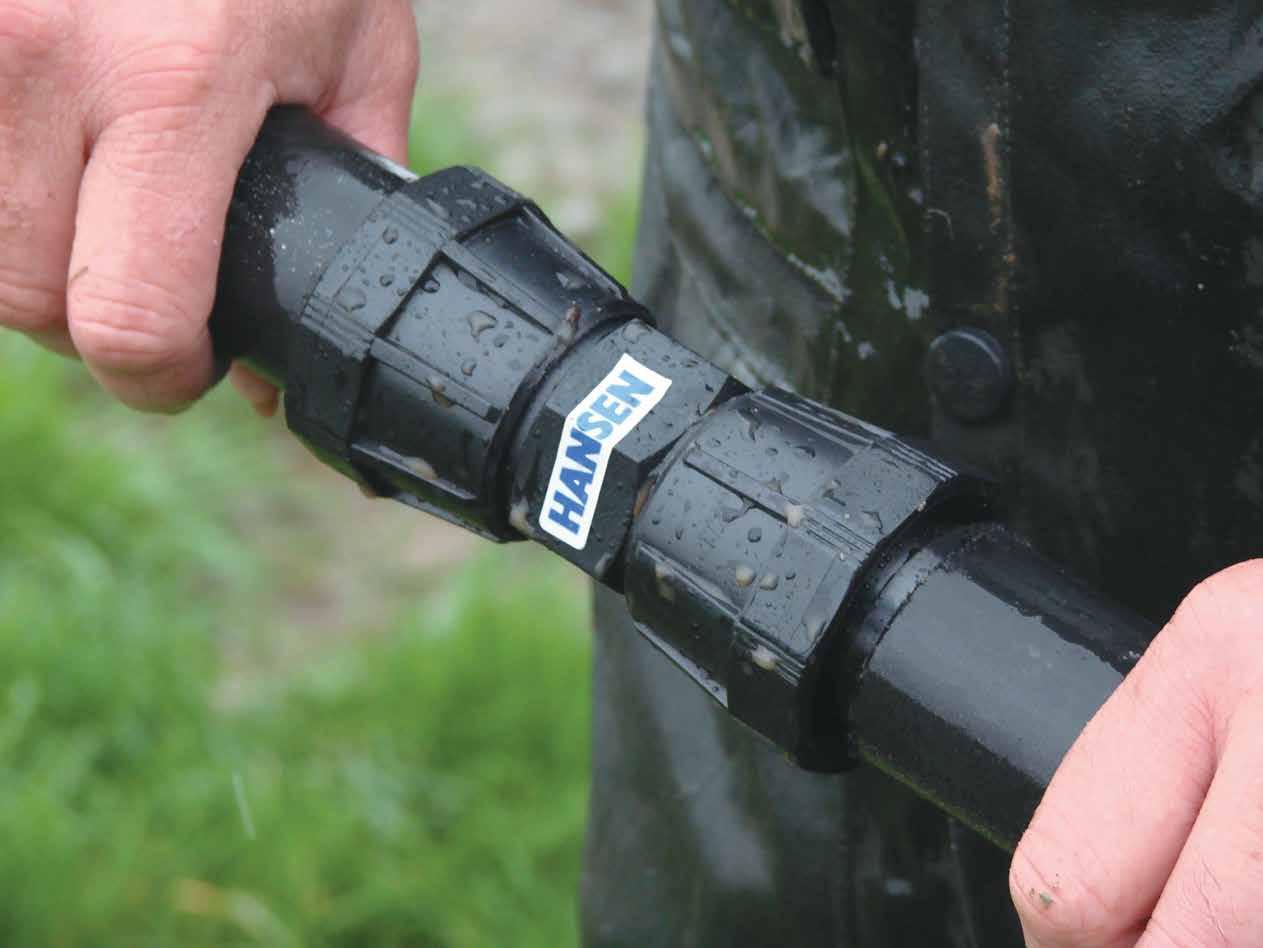
Don’t just ask for a pipe fitting, ask for a Hansen fitting!
www.hansenproducts.co.nz

Farmer takes a deeper dive into his operation via IFP
NORTH CANTERBURY
farmer Andrew Gilchrist has delved deep into the business and people side of his family-operated farm by completing an Integrated Farm Plan (IFP).
Gilchrist is one of 15 Waimakariri farmers to develop an IFP as part of Next Generation Farming, a two-year innovation project led by Waimakariri Landcare Trust (WLT). The main aim of the project is to help farmers explore and adopt ways of farming that are as profitable as possible within environmental limits.
IFP project lead Paul Reese described the plan as the “next step up from a Farm Environment Plan”. It examines five areas of a farm operation including business, people, farm systems, the environment and animals and crops.
“Like an FEP, the IFP looks at the environment, but it takes a much broader view of the entire farm business and delves deeper into a broader range of key topics,” Reese explains.
He says during their interview with a farmer they go through a set of questions and then identify where the gaps are so the appropriate expert can be found to work with the farmer on these areas.
“In Andrew’s case we identified business and people as focus areas.”
Gilchrist says while the process was a bit nerve-wracking to begin with, receiving the plan and being able to access expert assistance has helped him and his brother to make progress on the business and people side of their farm operation.
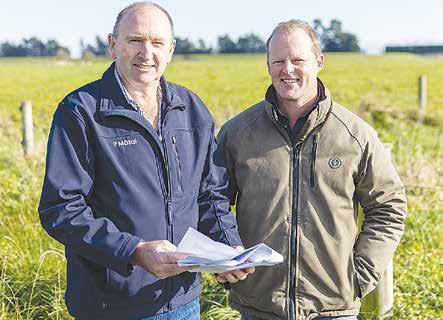
The pair have 430
hectares of family owned and leased land which they use for dairy support, mixed cropping, and lamb finishing. They employ 15 staff and also operate a successful crop spraying business.
“We have grown very quickly over the last seven years from our original crop spraying
business to owning and leasing farms, so everything has moved really fast,” Gilchrist says.
“Doing the IFP has cemented our thoughts on governance being a key focus area for us and it has given us the push to get on with it and to establish a clearer structure around roles and
responsibilities.”
He says they were able to look at who is responsible for each area of the farm business and make sure they are clear on what that looks like.
Reese says while every farm has different areas to work on after completing the plan, there are several common themes
Value in protecting CSAs
THE VALUE of protecting critical source areas in intensively grazed winter forage crops has been highlighted in a sheep winter grazing trial carried out on an Otago farm.
Run by AgResearch and supported by industry stakeholders – including Beef + Lamb New Zealand, the Ministry for Primary Industries and the NZ Landcare Trust – the ‘Understanding the impacts of sheep winter grazing’ project looked at grazing practices and the impact these had on contaminant losses.
The researchers found that where critical source areas (CSAs) were left ungrazed, there were significantly fewer contaminant issues than when these were cropped and grazed.
Water sampling also showed a reduction of approximately half in the amount of phosphorus sediment and E.coli in overland water flows – compared to control areas where the critical source areas were grazed.
The paddocks where the trial was run over three winters between 20202022 and covered two very similar
catchments.
CSAs were identified and in-field measuring equipment was installed before forage crops, namely swede and kale, were planted and grazed. Good wintering management practices – including leaving CSAs in grass and ungrazed, directional grazing and back fencing – were implemented in the catchments over different years and compared to the catchments with no protection of the critical source areas.
Samples were captured during
that have emerged.
“We have noticed that there are some gaps in the business and people areas. I think because farmers are practical people and are more focused on working in the business, it can be harder to find the time to work on the business.”
He believes the IFP allows farmers to take a step back from their daily tasks and take a helicopter view to see if there are any gaps that need to be filled in.
“You get a clear picture of where the opportunities are to grow your farming operation.”
All the farmers who participated in the project have provided positive feedback on the IFP process. Reese says the IFP template is now being used by a wider group of farmers.
“It’s been really well received, and I think it
run-off events over each winter and spring period.
The findings of the study reinforced the value of leaving CSAs in grass and ungrazed. It also found that grazing and treading pressures on the soil were low compared to cattle grazing, and this allowed rainfall to infiltrate the soil.
Nicole Foote, NZ Landcare Trust’s regional coordinator for Otago, says this is the first-time data specific to the impact of sheep winter grazing had been collected.
will continue to be used more widely to provide a deeper overview of how a farm business is operating and then giving farmers the support and help they need to make improvements.”
Gilchrist recommends that farmers give the IFP a go and says that while there are some searching conversations to be had, the overall outcome is extremely positive.
“Just take the ball and run with it. There will be nothing but good that comes out of it, even if you do have to have a few courageous conversations along the way.”
The IFP project is supported by the Ministry for Primary Industries through its Sustainable Food and Fibre Futures fund, Waimakariri Irrigation Limited (WIL), Environment Canterbury, Ballance Agri-Nutrients, and DairyNZ.

She says while winter grazing is known to make a significant contribution to total losses of contaminants transported from land to water, there had been very little information available that documents losses under sheep grazing.
“This research provides invaluable information for farmers looking to improve their land management practices and minimise environmental risk.”
@rural_news
facebook com/ruralnews
RURAL NEWS // AUGUST 15, 2023 22 MANAGEMENT
Integrated Farm Plan (IFP) lead consultant Paul Reese discusses IFP outcomes with Swannanoa farmer Andrew Gilchrist.
Gaul Fly gives thistles the prick
THE GAUL Fly parasite was imported into New Zealand about 20 years ago by our Wellsford/Warkworth Beef and Lamb farm monitor group.
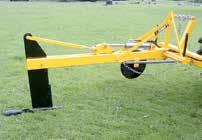
The late John Foster was the driving force behind this project and did the research into its origins and effectiveness.
Local farmers helped with financial contributions for trial work to ensure that the fly would not target other plant species, especially natives.
Having given financial support, I was given thistle seed heads containing larvae, soon to emerge as adults and deposit eggs. They soon multiplied and in a few years and had spread throughout the district – up to at least 10km against the prevailing SW wind.
The Gaul fly is slightly smaller than a house fly and its colour varies from green to brown, probably varying with age. Six to eight flies will be seen on a mature plant and will deposit eggs on every flower and all buds. The larvae not only devour all developing seed, but also the inside of buds before the seeds form. They are very thorough and seem to cover all flowers and buds.
The fly also forms hard wood-like Gaul, varying in size from as large as a small marble, according to the number of larvae present.
Sadly, John died soon after they were released
and with his departure, no-one thought to spread this parasite nationwide. I considered this parasite of value – to at least reduce the impact of this weed and eventually reduce chemical use – and decided to make this fly’s larvae available to farmers.
I offered farmers two small mesh bags containing thistle seed heads which carried larvae, to hang on fences, at a cost of $60 to cover costs –$30 of which was donated
to the Red Cross. Over 50 farmers from every district around the country took up this offer and the Red Cross benefited by more than $1,500.
Now, after about 8 years, this parasite must be well established. The obvious evidence of the presence of the Gaul fly is the total absence of thistle down drifting overhead in the summer breezes.
After pine forests have been harvested in my area, the ground will be

For Higher Productivity + Lower Servicing Costs







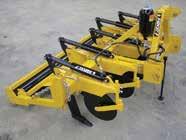

covered in thistles, after the accumulation of seed for decades. Farmers have noted the absence of clouds of seed bearing down from tens of thousands of plants.
Originally, I estimated that the larvae would destroy 90% of seed, now I believe that figure could be 100%. All parasites are great survivors and will never totally eliminate their food source. In the spring, some thistles flower normally before the flies emerge after the
winter period. Isolated thistles may also not be found.
So how does this play out in the future? It is my belief that because
the seed remains viable for over 30 years, scotch thistles will remain a problem for many years to come. However, the number of thistles should
DRAINAGE AND
SOIL
AERATION PAY BIG DIVIDENDS

Don’t put good fertiliser on compacted soil which can’t absorb it. If your soil can’t support 15cm root growth and good worm population check for compaction. You could need aeration. In dollar terms, what would 20% production increase mean to your yearly turnover?
YOUR GREATEST ASSET IS THE SOIL YOU FARM. DON’T DESTROY IT!
slowly decline as the bank of seed diminishes in the soil. Eventually, the only seed produced will be from plants that escape the attention of the fly. In about 30 years’ time a balance will occur between parasite and host, both at a low level, as occurs in much of nature.
I have noticed thistles with larvae in their seed heads in parts of the country where I did not expect to find them. The larvae may have been in the thistle head in hay bales or carried by sheep in their wool.
We are no longer prepared to supply larvae, but there should now be plenty of thistles in the countryside that have the larvae of this parasite. The plants are fairly obvious as the flowers are malformed and will have very hard seed heads containing Gauls.

I have had no feedback from those that were sent seed heads and would like to know the success rate. My email address is glevet5192@gmail.com
• Gordon Levet is a well known ram breeder and farmer based in Northland. @rural_news facebook com/ruralnews
RURAL NEWS // AUGUST 15, 2023 MANAGEMENT 23
GORDEN LEVET
The Gaul Fly parasite was imported into New Zealand about 20 years ago to help control the spread of Scotch thistle.
MAITLAND RD5, GORE. PH/FAX 03-207 1837 OR 027-628 5695 www.james-engineering.co.nz • SOIL AERATION SPECIALISTS • HEAVY DUTY AUTO RESET MOLEPLOUGH AERATORS PRE RIPPERS NOW AVAILABLE, 5, 6 OR 7 LEG MODELS TORNADO RANGE • UDOR ceramic plunger pump & gear-box • Genuine Honda petrol engine • 10 models from 1800 to 5000 psi ELECTROBLAST RANGE ALBERTI HOT CLEANERS • UDOR ceramic plunger pump • Heavy duty 1440 RPM motor • 230 & 400 Volt www.aesblasters.co.nz FREEPHONE 0508 78 78 78 Sales & Service throughoutdealers ZealandNew • 230 or 400 Volt 1440 RPM electric motors • 8 models from 1600 to 5000 psi
Time to re-evaluate pre-lamb drenching
Sheep farmers who would normally treat ewes with drench capsules before lambing are being urged to reconsider before reaching for the next long-acting alternative.

THE WOOL TO SURVIVE



EARLIER THIS year the popular Bionic drench capsule was banned for


use by the Ministry for Primary Industries, following concerns around the rate of release of drug from the product.






Other long-acting alternatives are available, but this could be a chance to push the ‘reset’ button on the use of these products, says vet and Beef+Lamb New Zealand Wormwise manager Ginny Dodunski.


In an era of widespread drench resistance, Dodunski says if ewes are well-fed at an optimum Body Condition Score (BCS) and are not grazing pastures heavily contaminated by internal parasite larvae, then a long-acting
pre-lamb drench should not be necessary.
She says in the weeks prior to lambing and during early lactation, ewes are more prone to losing their innate immunity to worms.
How much this impacts on the ewe and her production and economic outcomes depends on a number of factors.
The first of these is the amount of feed on offer at lambing and in the weeks immediately prior to lambing.
“You will get a production response from giving ewes a long-acting drench if they are underfed, but if you really nail the feeding, get grass covers right at set-stocking and the grass coming up under the ewes after lambing, then the need for a longacting drench product drops off.”
She says another factor to consider before picking up the drench gun is body condition. When ewes are at an optimum BSC of 3–3.5 (or above) then they are much better able to buffer a parasite challenge and farmers are less likely to get an eco-


nomic response from treating those animals.






“There are a lot of good reasons for maximising the number of ewes at a BCS of 3–3.5 in the flock.”

A third factor to consider is the level of worm contamination on the pasture being carried into late winter and spring.

There will be production penalties if understress ewes are fighting off thousands of worm larvae ingested with every mouthful.
This is more likely when ewes are grazing pastures that have been grazed by lambs over autumn and winter.
Ultimately, Dodunski would like to see routine pre-lambing drenching become irrelevant by shifting the focus to optimal feeding and management.
“A strategy for this season could be to separate multiple-bearing ewes on body condition score and only treat those who are under BCS 3 –with the aim of reducing the proportion of these ewes at pre-lamb time next year”.
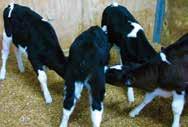
RURAL NEWS // AUGUST 15, 2023 24 ANIMAL HEALTH
Wormwise manager Ginny Dodunski says if ewes are well-fed at an optimum Body Condition Score, then a long-acting pre-lamb drench should not be necessary.
When ewes are at an optimum BSC they are much better able to buffer a parasite challenge.
The one variable you can control to improve profit Woolover covers dramatically improve the survival of new born animals Woolover ANIMAL COVERS Ph 03-354 4123 • Cell 027-434 1606 • Email woolover@xtra.co.nz • web www.woolover.co.nz AVAILABLE THROUGH ALL LEADING STOCK AND STATION AGENTS AND VET SUPPLIES ® • If you can get to them you can save them • Cost effective and practical • Easy to fit • Improves weight gain ULTRA CALF COVER: • Waterproof • Breathable • Durable • Cleanable
Managing tripletbearing ewes

THE TARGETED management of triplet-bearing ewes in the four to six weeks before lambing can significantly increase the kilograms of lamb weaned and therefore dollars produced per ewe.
By feeding tripletbearing ewes to increase
Farm trials showed there was no advantage to feeding a high protein supplement to tripletbearing ewes that were well fed on pasture. This is because it is usually energy rather than protein that is the limiting factor.
MAXIMISE PRE-WEANING GROWTH RATES
EWES REARING three lambs can have difficulty eating enough for themselves and three lambs.
To maximise the ewe’s intake and drive lactation, graze pastures no lower than 4cm or feed high quality forages such as lucerne and clover/herb mixes.
their intake of high-quality pasture in the four to six weeks before lambing, both lamb survival and lamb growth rates will be enhanced.
The pasture needs to be of high quality and at least 1200kg DM/ha (or 4cm high). This height allows the ewe to maximise the quantity of grass she harvests in every mouthful.
Rumen size does not differ between twin and triplet-bearing ewes. So, from a nutritional point of view, the two groups do not necessarily need to be separated. However, if one group is to be given preferential treatment, it should be the triplet-bearing ewes.
The ewes should be at a Body Condition Score of 3 (minimum) and the ewes should be 20kg heavier at lambing than at mating. This takes into account lambs, membranes and fluid. If triplet-bearing ewes are not 20kg heavier, then they will have lost body condition and lamb survival may be compromised.
If pasture is limited, then ewes carrying triplets should be prioritised for supplementary feeding with a high energy supplement such as peas, grain or sheep nuts. Average or low-quality silage or hay is not recommended because of its high bulk.
twin lambs and they lose heat faster because they are smaller.
Calving 2023
Tightening feed in late pregnancy does not reduce birth difficulties or bearings. It does, however, increase the risk of metabolic diseases such as Sleepy Sickness.
Underfeeding at this critical time can result in smaller, weaker lambs, poor mothering behaviour and reduced colostrum and milk production.
Avoid set-stocking too early. Set-stocking too early can mean all the pasture is eaten before lambing is finished. This will impact on milk production and pre-weaning growth rates.
If pasture is slow to come away in spring, consider supplementary feeding single ewes and giving the best pasture to the ewes with triplets.
Triplet-bearing ewes should be lightly stocked at less than 10 ewes/ha to help minimize disturbance at lambing.
The longer the ewe stays on the birth site, the stronger the bond between the ewe and her lambs. Alternatively, the triplet-bearing ewes can be spread evenly across the twin-bearing mobs. This can reduce the number of lambs in a given area, with the aim of reducing mismothering.
Shelter is particularly important for triplet lambs. Their body temperature is lower than
• Ensure all calves are fitted with a NAIT tag before they reach 180 days of age.
• Register any fitted NAIT tags within 7 days of tagging.
• All calves must be tagged and registered before their first movement. So, if you are sending them off your location, make sure you meet your NAIT obligations.
• Calves must be NAIT tagged correctly.
RURAL NEWS // AUGUST 15, 2023 ANIMAL HEALTH 25
- Source Beef+Lamb NZ
NAIT is an OSPRI programme Failure to comply with NAIT obligations may result in fines or prosecution issued by the Ministry for Primary Industries. For more information about your obligations as a PICA, please visit our website ospri.co.nz.
Feeding triplet-bearing ewes high-quality pasture in the four to six weeks before lambing, ensures better lamb survival and growth rates.
For more information go to OSPRI.co.nz or 0800 842 463 Support lifetime traceability
Praise for accuracy and speed
pressure.
AN OTOROHANGA contractor is embracing the accuracy provided by Väderstad Tempo precision planters.
MF Agri provides a full range of contracting services around the Waikato region, including groundwork, silage and baleage, as well as planting crops for its sheep, beef and dairy clients, many of whom were asking for section control.

MF Agri’s Ben Ferguson says they chose the Tempo for many reasons. He told Rural News the machine does everything you need out of the box, including micro granular applications, precision planting and offering hydraulic downward
The company’s Väderstad Tempo F8 is a trailed, eight-row planter with a 6m working width, set at 750mm row spacing. It has the ability to apply fertiliser and a 17-litre micro granule hopper, which is also used to apply slug bait when drilling into strip-tilled ground. Each individual seed and fertiliser hopper holds 70 litres and features its own auto shut-off.

MF Agri uses it both as a direct drill and to plant into cultivated ground. Main operator Oli Jenkins says there is no difference between planting directly into untilled ground or into strip-tilled ground. However, he reckons the best results are in cultivated ground after a rotary tiller.
The Tempo offers fast planting speeds thanks to its PowerShoot metering system that uses air pressure to control the seeds’ movement right down the tube until it
is in the soil. “Everyone is in a hurry to get their crops in as fast as possible. With the Tempo we can get more work done,” adds Jenkins, who has planted at 15 km/h in
good conditions. While much of the consistency and accuracy is because of PowerShoot, chassis design also plays its part. The machine has four interconnected,

hydraulically-controlled


wheels on the frame, ensuring consistent planting depths – even on rough ground.
The hydraulic system can apply up to 325kg
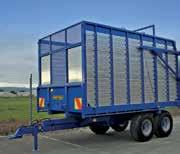

coulter pressure, with adjustments and tweaks achieved via the iPad control function. Each planter unit has its own rate control, allowing for mixed plantings.
Calibration is said to be a straightforward, twominute job. This requires a sample to be weighed, the result entered to the tablet, from where an adjustment is made. Data gathered from each job is stored on the Gateway on each planter, meaning there is no issue should the iPad become lost. The information is also being sent wirelessly back to the office for invoicing or client reference.
“The Tempo has made it easier for us to pick up planting jobs because of its accuracy,” Ferguson says.
ST PAUL’S CRACKS IT AGAIN!
ONCE AGAIN, the sharp minds at St Paul’s Collegiate School in Hamilton were the 2023 Young Innovators of the Year Winners at this year’s Fieldays.
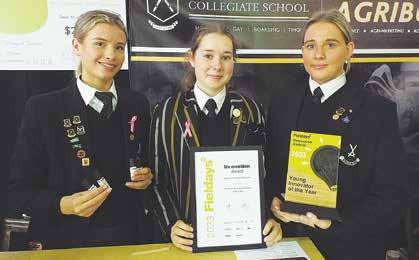
CAPRA Skin, conceived, designed and manufactured by students Lucy, Emma, Mackenzie and Lochie is a specially-formulated goat’s milk lip balm.
Early in the process, the group realised that the core ingredient offered many natural benefits, including vitamin A, fatty acids and moisturising agents.
These, alongside the other main ingredients of kawakawa oil and bee venom, all have cell regeneration qualities.
In developing the lip balm, the team recognised that many teenagers suffer from acne and use medication to clear up the problem. Unfortunately, a major side effect is drying out and cracking of the lips. The students looked at the current lip balm market but couldn’t find a lip balm that was specifically tar-
geted towards teenagers with dry and cracked lips.
From a development perspective –and wanting to incorporate New Zealand ingredients – the group decided to use Kawakawa oil, which is a native to New Zealand. The ingredient is nongreasy, helps heal skin conditions and seals wounds. It also restores hydration, while reducing itching and redness.
On the marketing front, the students decided to call the product Capra Skin. The name originates from the Latin word for goat, which more recently is used as the acronym for the Greatest of All Time (GOAT) – which is the impression they want customers to feel, having used the product.
There are plans to expand the product offering beyond lip balm to an extensive range of skincare products. Follow the journey on Instagram at capra.skin and other social media outlets.
RURAL NEWS // AUGUST 15, 2023 26 MACHINERY & PRODUCTS
markd@ruralnews.co.nz @rural_news facebook com/ruralnews
MARK DANIEL
STRENGTH / QUALITY / PERFORMANCE PHONE: 0800 622 276 WWW.MCINTOSH.KIWI Tip Trailers 4.5 - 20 Tonne
MF Agri’s Ben Ferguson says the Tempo does everything you need out of the box, including micro granular applications, precision planting and offering hydraulic downward pressure.
The winning St Paul’s team with the their lip balm at this year’s Fieldays.
Mowers just the right cut for high outputs
contact with the ground.
AS WE move towards the November Agritechnica event, Austrian manufacturer Pottinger is about to release a brace of new Novacat rear butterfly mowers.
Following on from the NOVACAT V 10000, launched last year, the new Novacat V 8400 and 9200 machines offer maximum working widths of 8.40 and 9.2 metres respectively. They come with alternate mounting positions, allowing 8.12 to 8.36m on the smaller unit and 8.95 to 9.2m on the larger. Depending on the position selected, the clear passage width between the mowers is 2.03 to 2.28m.
Featuring a compact design, angled booms allow for an extremely short headstock, which brings the centre of gravity closer to the tractor. Lighter than existing
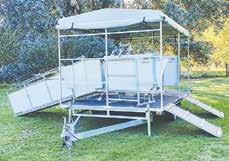
models in the extensive range, the units can be supplied as a standalone mower, or with tine (ED) or roller (RC) conditioners. This results in tare weights of 1890 to 2420kg, making them suitable for pairing with the increasing number of high horsepower 4-cylinder tractors.
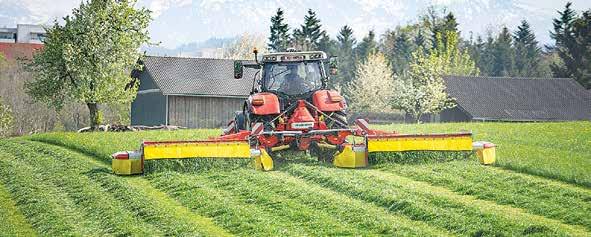
The heart of these mower combinations is the cutter bar. At just 4cm high, this guarantees optimum crop flow, while the 28cm deep profile helps deliver the opti-
mised ground tracking.
The centre pivot mounting on the mower units provides lateral oscillation of +20°/ -16° to ensure perfect ground tracking, with hydraulic weight alleviation providing uniform ground pressure over the whole working width.
The Non-Stop Lift hydraulic collision safety device provides protection of the cutter bar, avoiding obstacles by folding backwards and simultaneously raising the boom, preventing
The perfect turn!
PRECISION AGRICULTURE spe-


cialist Ag Leader has introduced a new ‘hands free’ turning option to its guidance and steering systems.
The cleverly named TurnPath system provides fully automatic, precise and repeatable end-ofrow turning from either straight or curved guidance patterns, with the option to skip passes if desired.
Ag Leader sales manager – Asia Pacific, Douglas Amos, says the new function optimises turning accuracy and efficiency.
“Every farmer can relate to the frustration of turning machinery and large implements around at headlands,” he says.
“Typically, it means disengaging the autosteer system, taking back control of the steering wheel, shutting down and disengaging the implement, making the turn, then lining up the next pass, re-engaging the implement and reengaging the guidance system. You just about need two sets of hands to manage everything.”
TurnPath makes turning completely hands-free so the operator can focus on other tasks.
The technology has been exten-
sively tested on more than 60 different machines across four continents.
“Ag Leader’s goal has always
damage – particularly at higher speeds.
Control functions include the easy to operate, Basicline preselect system as standard or the option of the ISOBUScompatible Selectline preselect control system. Either system allows both mower units to be lifted separately using just one spool valve. This also actuates the transport safety interlock that hydraulically “locks out” the mowers at the headland, preventing them swaying and coming into
InCommand 800 & InCommand 800 Guidance Only display. Any source of a correction signal can be used, although the best results are said to be achieved with TerraStar-C Pro or RTK.
The Selectline preselect system automates the individual lift system, making it easier to mow wedge-shaped or irregular paddocks. If the tractors are equipped with headland management functions, individual lifting can be accomplished using two separate spool valves.
During road transport,
the mower is hydraulically folded vertically through 92° and then locked hydraulically in the transport position. When attaching and detaching the mower combination, the retractable front guard provides plenty of space between the tractor tyres and the mower, allowing easier hitch and unhitch tasks.
been to make farming easier and TurnPath is a good example of that,” says Amos. “It’s easy to set up, easy to use, performs consistently and works seamlessly across your entire fleet.”
TurnPath will be available as a one-time unlock option through the InCommand display from November 2023 onwards.
To take advantage of TurnPath, the machine must be equipped with a SteerCommand Z2 or SteadySteer system in combination with an InCommand 1200,


“SteerCommand Z2 is an integrated guidance system that utilises CAN, integrated steering or external hydraulic valves, while SteadySteer is an assisted system that mounts to your steering wheel,” Amos says. “InCommand 1200 is an all-in-one, ISOBUS-compatible display that controls a range of precision planting, spraying, harvesting and decision support systems.”
A high definition, low-glare 30cm touchscreen display has built-in lightbar guidance, four camera inputs and split-screen capability.
It also offers wireless connectivity to sync and share guidance lines, coverage maps, live statistics, yield information and satellite imagery with other connected machines and remote devices.
– Mark Daniel
RURAL NEWS // AUGUST 15, 2023 MACHINERY & PRODUCTS 27
MARK DANIEL markd@ruralnews.co.nz The new Novacat V 9200 machine offers a maximum working width of 9.2 metres. CALL IN & SEE US | 73 PRESTON STREET INVERCARGILL PHONE: 03 215 8558 Email: info@hecton.co.nz Visit our website www.hecton.co.nz for a full list of products SINGLE CONTRACTORS CRUTCHING TRAILER
CRUTCHING
DOUBLE CONTRACTORS CRUTCHING TRAILER TRIPLE STAND CONTRACTORS CRUTCHING TRAILER This comes complete with a Contractors Air Operated Sheep Handler, Lead up Race, removable roof, 30m extension cord & shearing pole. This comes complete with 2x Contractors Air Operated Sheep Handlers, 2x Lead up Races, permanent roof, hydraulic brakes, 4 port multi box & 2x 30m extension cords. This comes complete with 3x Contractors Air Operated Sheep Handlers, 3x Scissor Gates, permanent roof, hydraulic brakes, 4 port multi box, 3x 30m extension cords OPTIONAL EXTRAS: LISTER NOVA DAGGING PLANT, COMPRESSOR 50L 2HP INCLUDES COVER, GENERATOR, COUNTERS, CUT OFF SWITCH, CUT OFF SWITCH BRACKET • FINANCE OPTIONS AVAILABLE. – TERMS & CONDITIONS APPLY •
HECTON CONTRACTORS
TRAILERS
Kiwi techs aim for top honours
MARK DANIEL markd@ruralnews.co.nz
NINE NEW Zealand finalists are vying for recognition as the ‘best of the best’ at the 2023 John Deere Technician of the Year Awards.
The awards, now in their third year, were established to acknowledge the important contribution John Deere technicians make to the New Zealand agriculture,
construction and forestry industries and to applaud excellence in the provision of service and support to customers.






John Deere ANZ managing director Luke Chandler says there are more than 100 award nominations from 62 dealerships across New Zealand and Australia.
“Technicians require a unique combination of mechanical knowledge, proficiency in digital tech-

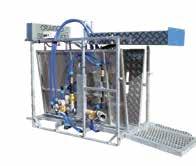
nology and advanced problem-solving skills. Becoming a finalist in the annual awards is a testament to the hard work and dedication our technicians inject into their roles.”
Seven titles will be awarded across five categories, including individual country awards for both the Agriculture & Turf Service Technician of the Year and
Parts Technician of the Year. One award winner from either New Zealand or Australia will be announced as the Service Apprentice of the Year, Parts Apprentice of the Year and the Construction & Forestry Service Technician of the Year.
The NZ finalists come from a wide range of backgrounds, such as last year’s NZ Technician of the Year winner Greg
Bishop, based at Otago Farm Machinery in Mosgiel. He has spent a life in agriculture – including dairy farming and tractor driving in the region’s high country.
Likewise, Bryce Dickson from Brandt, Whangarei, claims to be a self-confessed “petrol head”. He started his working life in the automotive industry but changed paths to agricul-
ture at the start of the global financial crisis. His technical skills and outstanding customer service saw him awarded the inaugural recipient of John Deere’s Technician of the Year award in 2021.


Mollie Clarke, of Brandt, Gisborne, is chasing the Parts Technician of the Year Award. She has deep roots in the agricultural industry, having grown up on
her family’s farm. After leaving school, Clarke stumbled upon a parts technician position at her local John Deere dealership and, after her first few days at work, says she knew she had found the industry she wanted to not only be part of, but to excel in.

John Deere ANZ director of aftermarket and customer support Emma Ford says this year’s NZ finalists include a wide range of contestants.
“This includes a mature age apprentice who has transferred from parts to a career as a service technician, a young technician whose mentor helped forge his path, and a female rugby player who grew up on dairy farm.”
The finalists will travel to JD’s Australian headquarters in Brisbane later this month for a second round of judging, where they will be tested on their ability to perform hands-on tasks and troubleshoot technical issues, followed by an awards gala evening.
@rural_news facebook com/ruralnews

RURAL NEWS // AUGUST 15, 2023 28 MACHINERY & PRODUCTS / RURAL TRADER CRAIGCO SENSOR JET • Robust construction • Auto shut gate • Total 20 jets • Lambs only 5 jets • Side jets for lice • Adjustable V panels • Davey Twin Impellor Pump • 6.5 or 9.0hp motors PH 06-835 6863 MOB 021-061 1800 JETTER VIDEO: www.craigcojetters.com SHEEP JETTERS SINCE 1992 GUARANTEED PERFORMANCE QUICK TO SETUP – EASY TO USE – JOB DONE ELECTRIC FENCING TO YOUR DOOR SAVE TIME AND EFFORT! Trusted name in fencing for over 30 years OUR FULL RANGE ON-LINE Jump on-line or call us... www.taragate.co.nz info@taragate.co.nz 0800 82 72 42 JACKET BIB OVERALLS LEGGINGS 100% Waterproof Flexible Fleece Collar Hood Visor Acid Resistant Durable Seams Stitched On Soles Plain Toe or Steel Toe 175% more crack resistant than normal leather earthwalk.co.nz 0800 16 00 24 9am-5pm PHONE BUY sizes: BOOTS 5 - 13 (NZ) RAINWEAR XS - 4XL free shipping FLEXISKIN RAINWEAR & BUFFALO BOOTS $185 $180 $120 $100 $90 valued at $320 valued at $260 valued at $190 valued at $170 valued at $280 Flexiskin Rainwear - there really isn’t another product to match it for durability, comfort & price. The flexible fabric stretches as you move - so you can get around easier. The hood visor will keep rain from driving into your eyes & the fleece collar will keep you cosy and warm when the wind is howling. The 100% waterproof outer layer keeps you completely dry even during a torrential
downpour.
Brandt Gisborne’s Mollie Clarke joins eight other New Zealand finalists vying for recognition as the ‘best of the best’ at the 2023 John Deere Technician of the Year Awards.
Fully Escorted Tours
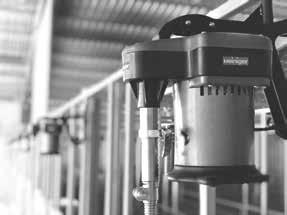






Nelson Bays & Marlborough
Oct 22, 2023 6 Days
Stay in sunny Nelson & Blenheim. Enjoy a Queen Charlotte Sound cruise, lunch & wine taste at Seifried winery, a Greenshell Mussel Cruise. Visit Motueka, Kaiteriteri, Abel Tasman National Park and Pupu Springs. Train to Omaka Aviation Centre.


Forgotten Highway & Taranaki
Nov 7, 2023 + Feb 13, 2024 6 Days
Visit Hobbiton, travel 40km by Rail Cart into the Forgotten World - 10 hand dug tunnels and over 25 bridges. New Plymouth sightseeing tour, cruise aboard Paddle Steamer Waimarie, then Northern Explorer train back to Auckland.



Bonded for Your Protection
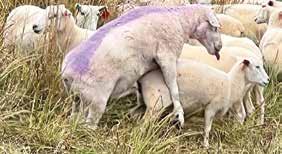
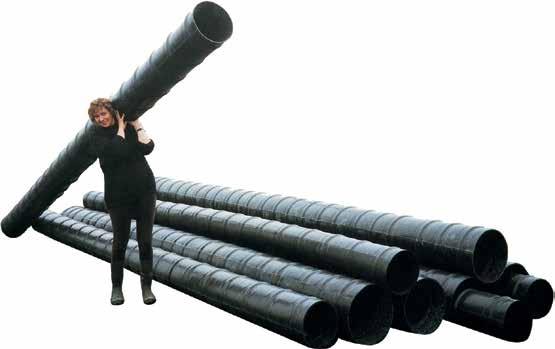

Since 1993 Door to Door Service in Auckland Metro Area















0800 11 60 60




RURAL NEWS // AUGUST 15, 2023 RURAL TRADER 29 www.mckeeplastics.co.nz 300mm x 6 metre $410 400mm x 6 metre $515 500mm x 6 metre $735 600mm x 6 metre $989 800mm x 6 metre $1496 1000mm x 6 metre $2325 1200mm x 6 metre $3699 ALL PRICES INCLUDE G.S.T. CULVERT PIPES NORTH ISLAND 23 Mahinui St, Feilding Ph 06-323 4181 SOUTH ISLAND 35 Wilkin St, Waimate Ph 0800 625 826 Lightweight, easy to install • Water Troughs Water Transport Water Storage For a Quadbar, call me, Stuart Davidson, owner of Quadbar NZ. 021-182 8115 Email: sales@quadbar.co.nz orformoreinfogotowww.quadbar.co.nz Quadbar introduces the new FLEXIBAR Flexibar includes all the safety and convenience features of the Quadbar with the added advantages of: • A flexible joint that allows the bar to flex rearwards in the event of contact with an overhead obstacle • The joint facilitates some sideways flexibility before locking and becoming more of a traditional crush protection device • In the event of a rearwards flip there is negligible movement from the flexible joint • The top section of the Flexibar can also be easily removed for transportation inside a vehicle. $ 780 +GST & Freight Recommended by Worksafe. ACC subsidy available tunnel houses www.morrifield.com t/f 03 214 4262 e info@morrifield.com Grow vegetables all year round T Very affordable and easy to install T New Zealand designed and made T 40 years producing tunnel houses T Range of models sized from 2m - 10m T
www travelwiseholidays co nz
www.organic-rams.co.nz • tim@organicstud.nz BOOK SHIRE HAIR RAMS HARDY, LOW INPUT EASY CARE ® Also Tufty (polled Highland) bulls, cows and calves available • NO DAGGING • NO SHEARING • NO DIP, DRENCH OR CHEMICALS SINCE 1989 ® 07 573 8512 | dipping@electrodip.co.nz – www.electrodip.com Featuring... • Incredible chemical economy • Amazing ease 1500+ per hour • Unique self adjusting sides • Environmentally and user friendly • Automatically activated • Proven effective on lice as well as fly • Compatible with all dip chemicals • Accurate, effective application Free Range & Barn Eggs SUPPLIERS OF: • Nest boxes - manual or automated • Feed & Drinking • Plastic egg trays QUALITY PRODUCTS MADE IN EUROPE OR BY PPP ❖ A trusted name in Poultry Industry for over 50 years ❖ • ATV Carrier Mats • Exit/Entry Areas • Calf Trailers • Horse Floats & Trucks • Weigh Platforms • Bale Mats • Comfort Mats for Wet & Dry Areas • Utility Deck Matting Phone: 0800 80 8570 www.burgessmatting.co.nz Rubber Safety Matting EARMARKERS BIRDSCARER HOOF TRIMMER DE HORNER LASER FF95 DIESEL HEATER 0800 379 247 www avonheating c ü Huge 9.5kW output. ü Made in Japan since 1991. ü Energy Efficient - 92% certified ü Safe, convenient and easy to useno mess, no fuss. ü DIY Install or we can arrange. ü No wood to cut, cart or store. ü NO indoor diesel odours For details contact: JULIE BEECH Ph 09-307 0399 julieb@ruralnews.co.nz YOUR ADVERT HERE MAKE SHEARING heiniger.co.nz/shed-safety
Ph 027-225 5283
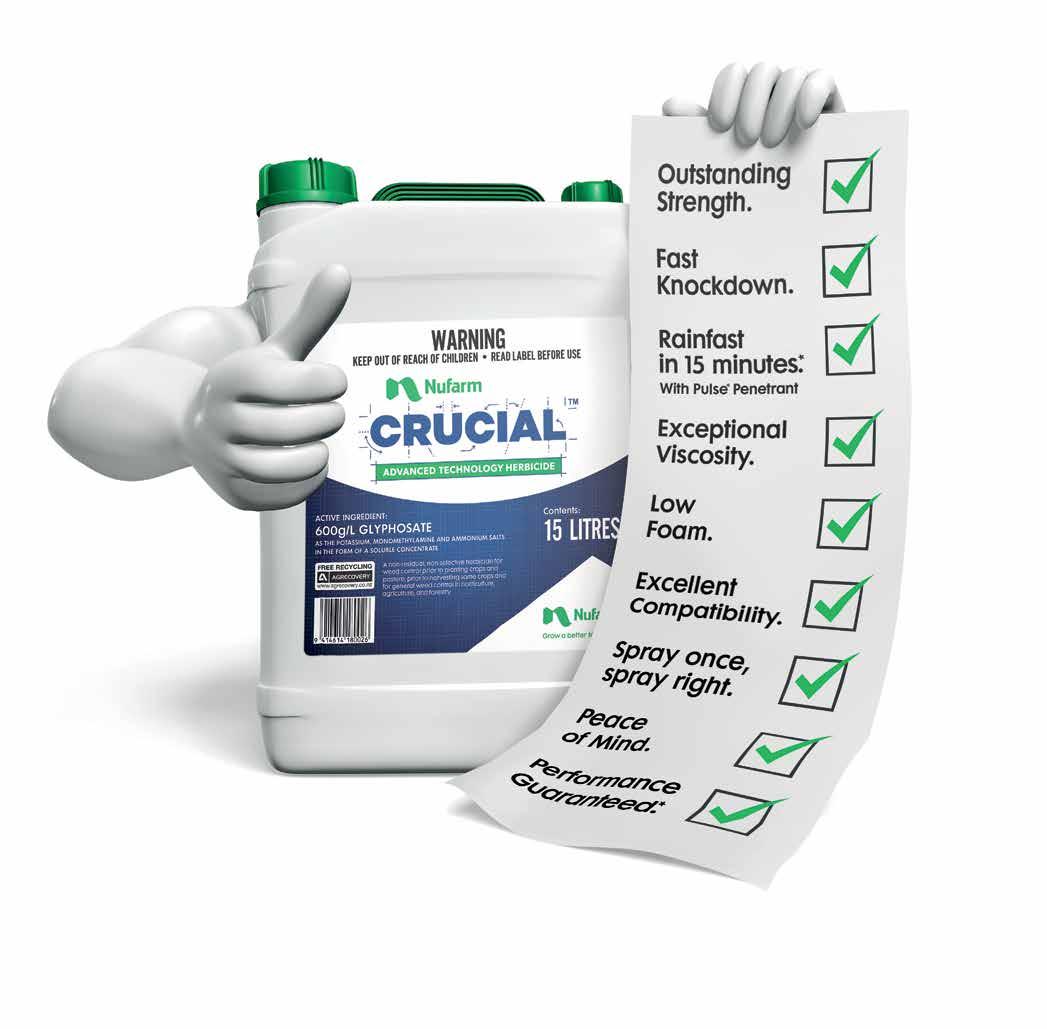
Tick all the boxes. It’s CRUCIAL®. ®CRUCIAL is a registered trademark of Nufarm Australia Limited. ®Pulse is a registered trademark of Nufarm Technologies USA Pty Ltd. *Commercial Performance Guarantee. ©Nufarm 2023. ONF207914NF Contact your local Rural Supplier or Nufarm Territory Manager. 0800 NUFARM or visit us at nufarm.co.nz/discovercrucial SC AN M E







































































































































































































